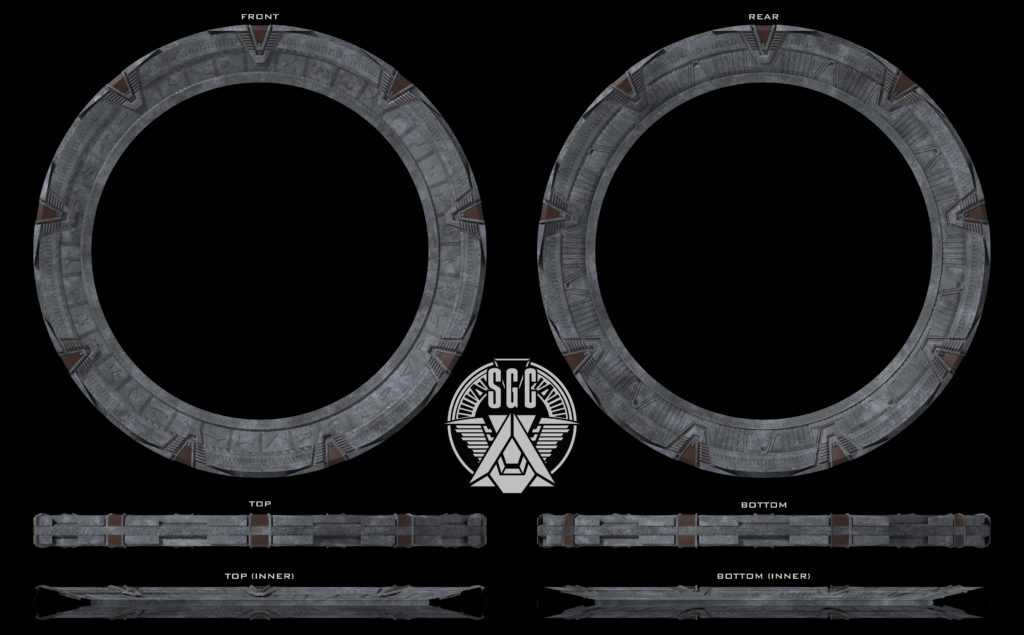
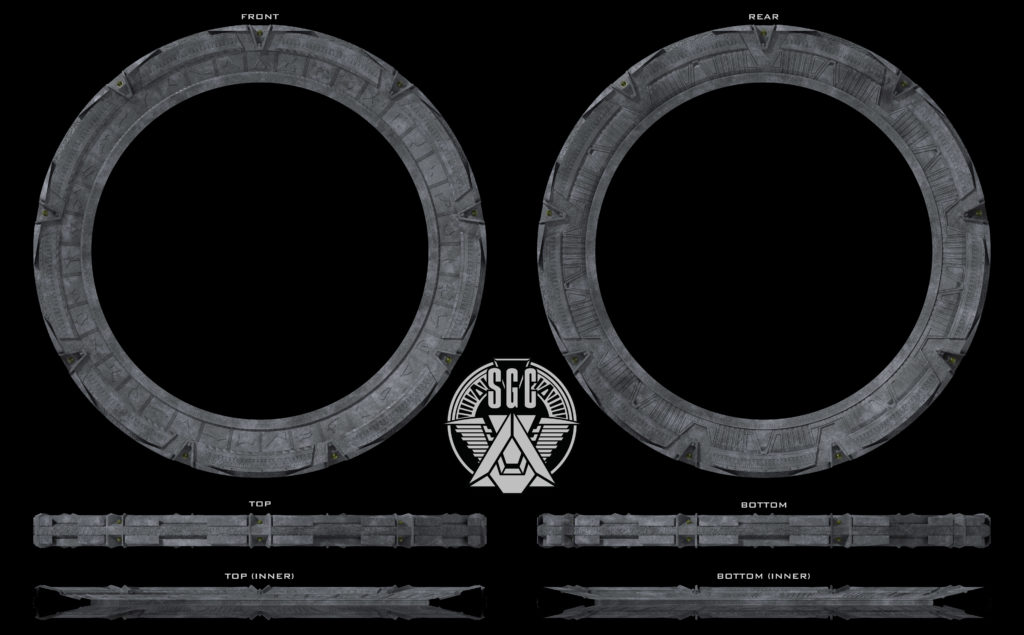
“Stargate 3.0 (Milky Way Version)” for Lightwave 2020, Released March 28, 2021 (CC0) —80 MB
Conversion Kits:
Main Model
Inner Rings With Alternate Origin Symbols
Continuing with my work on building a new stargate model, and in advance of the Atlantis-style ‘gate, we have the flagship version, the stargate as it appeared in the series Stargate SG-1, give a take a few alterations and enhancements.
I kept some elements from the film version, such as the precise alignment of the chevrons (they were reset higher when the setpiece was rebuilt for the show). I added some internal mechanisms to the chevrons give them more life based on the inner workings of the DHD, seen occasionally on the show.
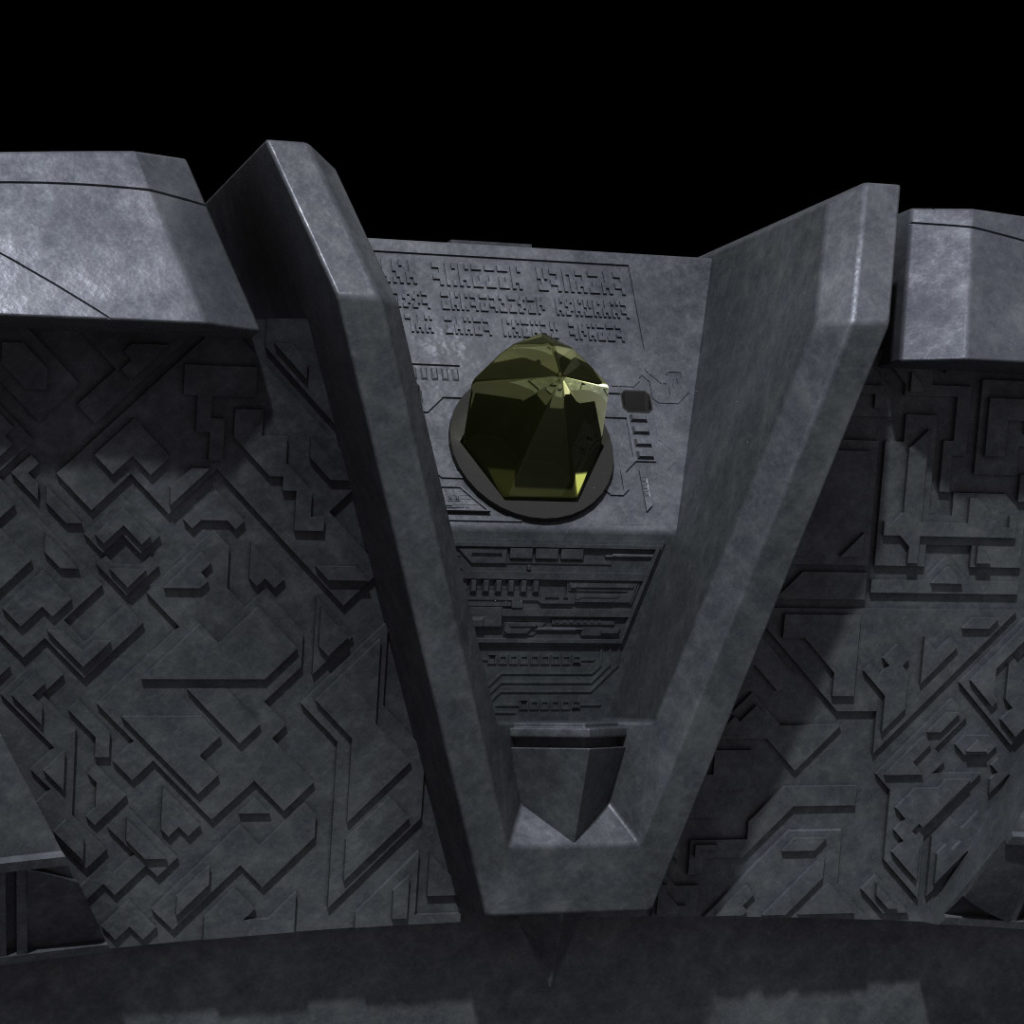
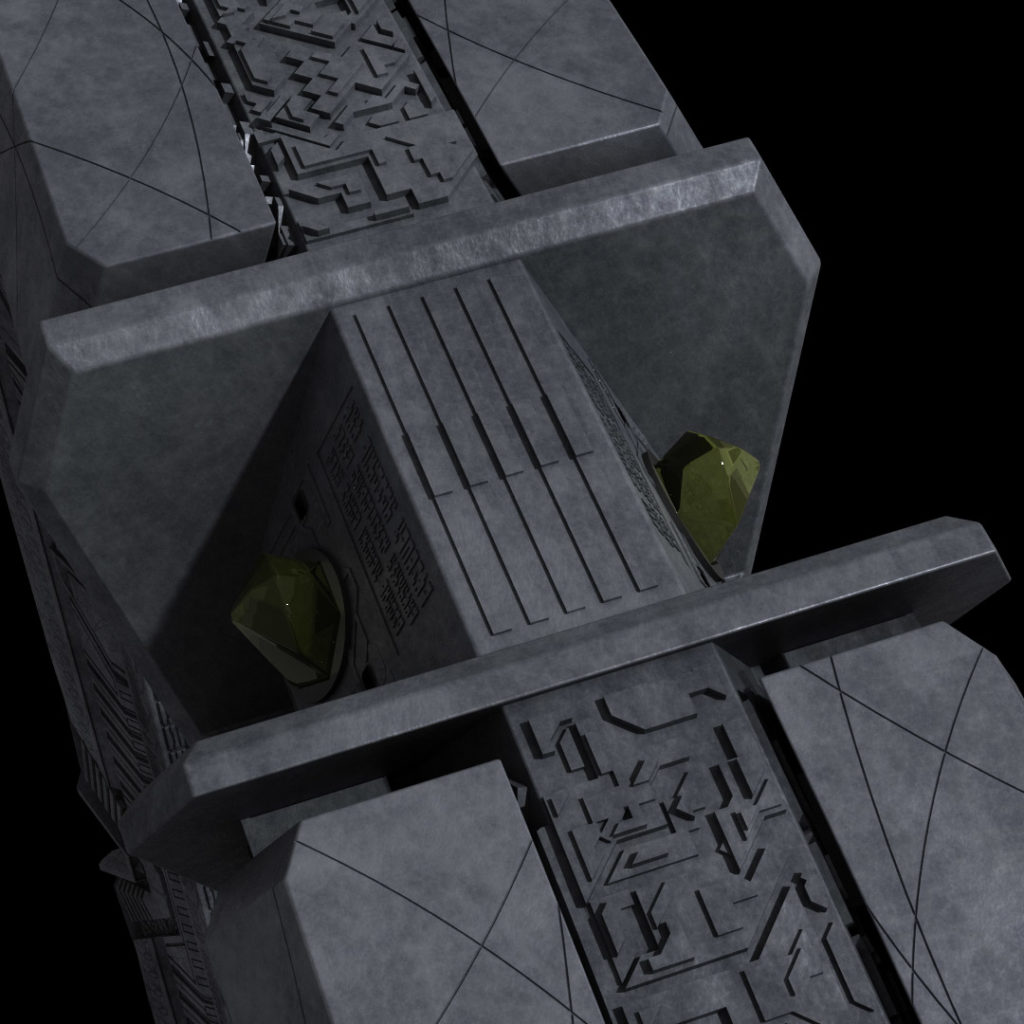
The texturing has a similar three-layer approach to the way the setpiece was painted, with a medium gray base layer, large, soft dark gray patches, and smaller streaks and splotches of white on top, though reduced in intensity (in my test renders, pulling exact colors from my photos and screengrabs looked a bit clownish and distracting).
Most notably, I decided to address the detail of SG-1’s production that bothered me the most. Much of the original movie’s action revolved around the “point of origin” symbols that completed a stargate’s address. That was carried through into the show… sort of. To streamline things, every stargate used the same 38 symbols for dialing addresses, and it was suggested that only the 39th origin symbol was unique, rather than every stargate having a full set of unique symbols representing the constellations of its particular planet. However, the stargate setpiece was never altered (and, many times, the origin symbol for the ‘gate found in Giza was prominently visible on other stargates, likely because of how tightly associated that symbol was with the show’s branding and iconography), and the DHD control device was only modified with unique symbols twice (which shouldn’t have even been on the DHD, but we can talk about that once I’ve actually modeled one), with most planets having a normal address symbol being used as their origin symbol. The end result was that only four unique origin symbols were ever made during the fourteen years SG-1 and its spin-offs were in production;2You can read a bit more about this in my post on the symbols of the movie version of the Abydos stargate Earth’s two stargates, discovered in Giza and Antarctica, and the ‘gates belonging to the planets Abydos (which had a different symbol in the movie), and P7J-989, a planet of the week seen in the episode “The Gamekeeper,” where the inhabitants lived in a virtual reality that they could leave by walking through any door marked with what turned out to be their stargate’s origin symbol. An additional official origin symbol was recently designed for the Phoenix Site featured in the new Stargate tabletop RPG from Wyvern Gaming.
But six symbols isn’t enough for me. No, this stargate model comes with almost fifty origin symbols, most of which are based off the alternate symbols from the movie Abydos stargate, the rest being modified from the standard symbols by me (in the case of symbols that were unchanged or not seen on the second stargate in the movie), meaning they all correspond to specific address symbols, which they resemble to varying degrees (some of them might be a bit too similar, but considering there are already two nearly–identical address symbols on every stargate, I can live with it). Two of the origin symbols were contributed by Scifi-Meshes member Rusty0918, for Langford Base and P3B-139. I’ve also taken the liberty of identifying certain symbols as belonging to specific planets based on the corresponding address symbol being used as origin symbols for them in the series, but it’s entirely up to you if you want to go along with that. There’s also an alternate version of the Abydos symbol, based on its brief on-screen appearance in the original cut of the Stargate SG-1 premiere episode, where it was small and upside-down. I think that looks silly, though, so I didn’t included it in the chart. A template file is included with instructions to make your own symbol, if you like.
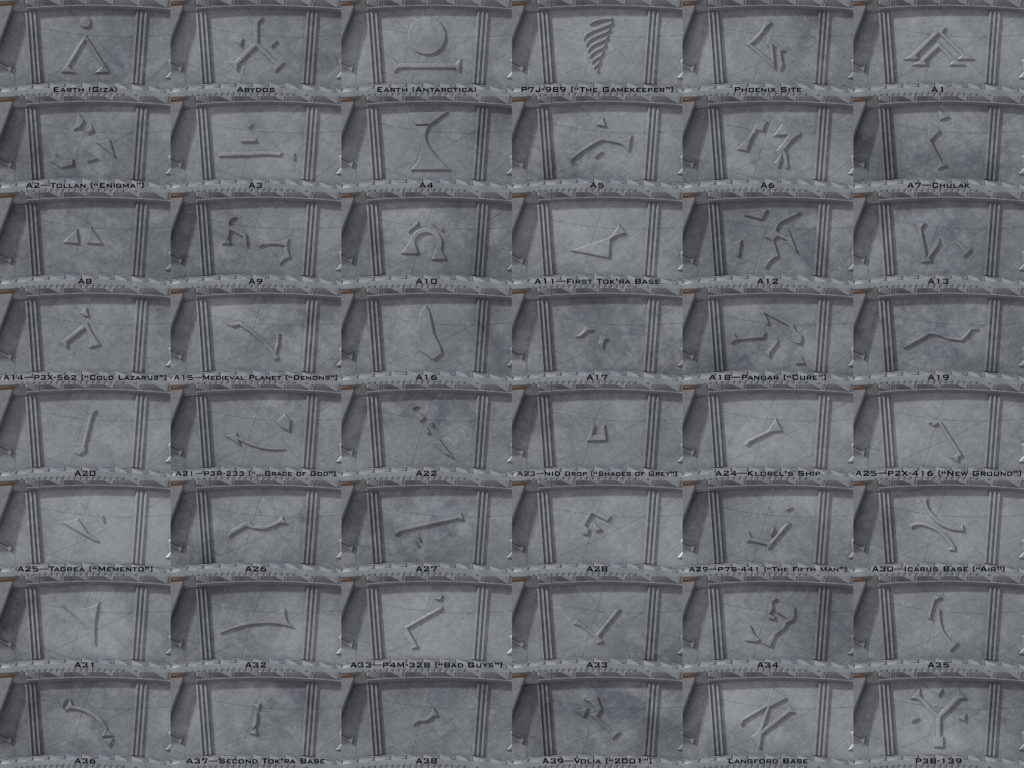
Just a few days ago, after becoming burnt out on modeling some 87 stargate symbols (cleaning up those bevels was a killer), I discovered this production diagram (local mirror) on the Stargate Prop Shop, apparently from the earliest days of the series, which featured 38 unused alternate stargate symbols intended for some sort of set decoration on Abydos. Perhaps they’ll be included in an accessory pack for this model later on. More pertinently, the page also contained this diagram of the stargate itself (local mirror), which I’d had in thumbnail form, but this time was photographed with enough resolution for me to make out the measurements, conclusively answering the question of how large the stargate is.
The stargate is exactly 20 feet in diameter. Not an inch more or an inch less. Oft-repeated statements floating around on-line citing a size of 22 feet are apparently in error. I cross-checked against three different production documents released by Joseph Mallozzi (construction plans for the Chulak stargate platform, and shot-planning floorplans for the SGC Gateroom and Stargate Operations on the Atlantis set), all of which had marked scales but no measurements given for the actual stargate, and they all confirmed the 20 foot outer diameter. So, an old question, finally answered. 20 feet across, with the actual ring being 2.5 feet thick from outer rim to inner rim. This necessitated a quick scale adjustment in the setup scenes in Lightwave, but it was an easy fix to conform it to the inner diameter (it’s still a couple inches too wide, but it’s a little hard to be certain since the actual stargate doesn’t 100% match the construction plans), though going forward I’ll have to keep in mind the object itself is about 11% too large when modeling other elements designed to fit with it.
The stargate also contains two sets of dialing setup scenes and demos for 7-, 8-, and 9-symbol addresses. More detail about the dialing process is in this blog post, but in broad strokes, the canon dialing method (“top-chevron”) has each symbol rotate under the top chevron, which briefly lights up as it opens and closes, while the corresponding chevron lights up and stays lit without moving.
The alternate method (“all-chevron”) has each symbol rotate under the corresponding chevron, which opens, lights up, and closes, which is how almost everyone seems to expect the stargate to work until they start going frame-by-frame through the episodes because they’re building a stargate model. It’s also much easier to animate.
The model is available for download at the top of this post. In addition to the canonical Lightwave 2020 version of the model, there are conversions to FBX and OBJ format for those of you who don’t use Lightwave or a Lightwave-compatible program. There’s also a texture reference package which includes renders and surface settings of the PBR procedural surface I used on the model to help you achieve the correct look for your conversions. Again, note that the scale of the model is slightly incorrect; it must be scaled to 90% of its modeled size, or about 20 ft 2 in (6.15 m) in height and width. The correction has already been applied to the setup scenes for the Lightwave (and, hopefully, FBX) version. The model and associated files are released under the CC0 Public Domain Declaration. Credit for their use is not required, but is appreciated.
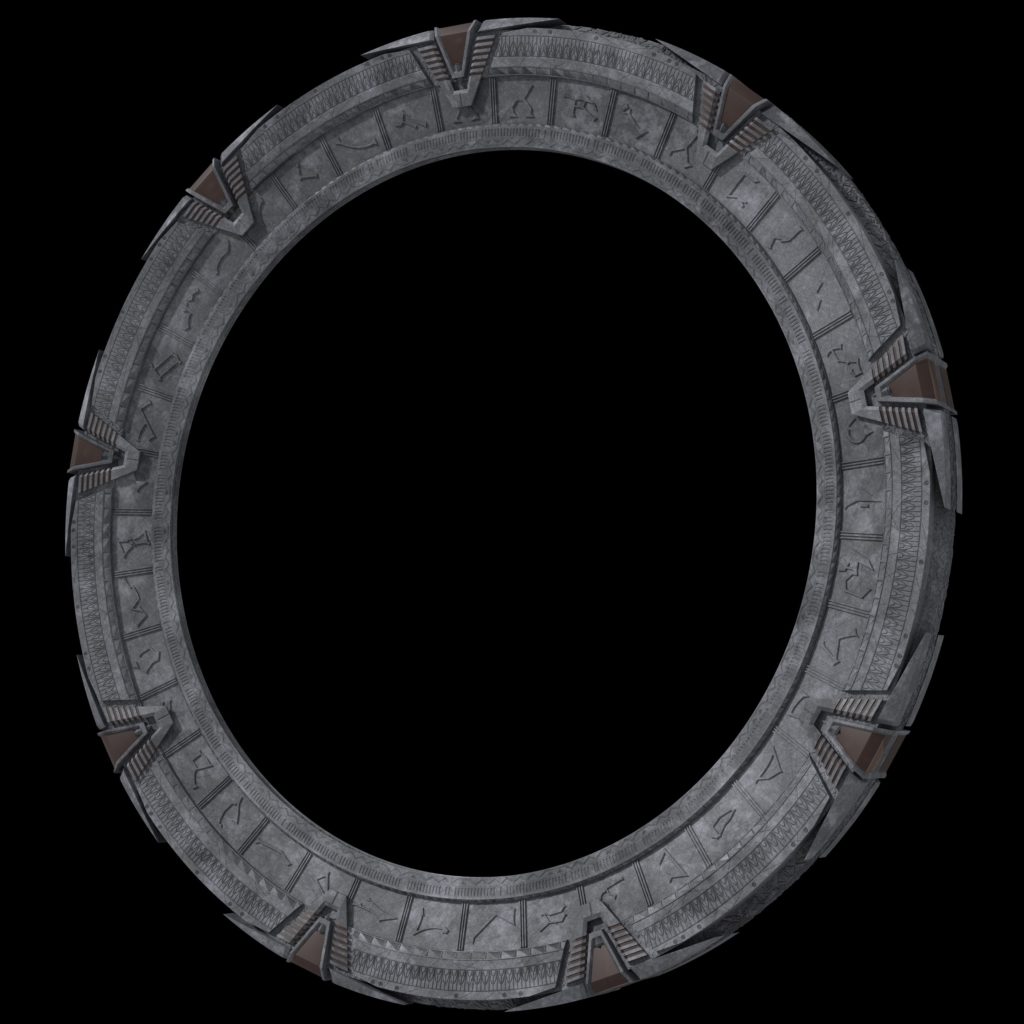
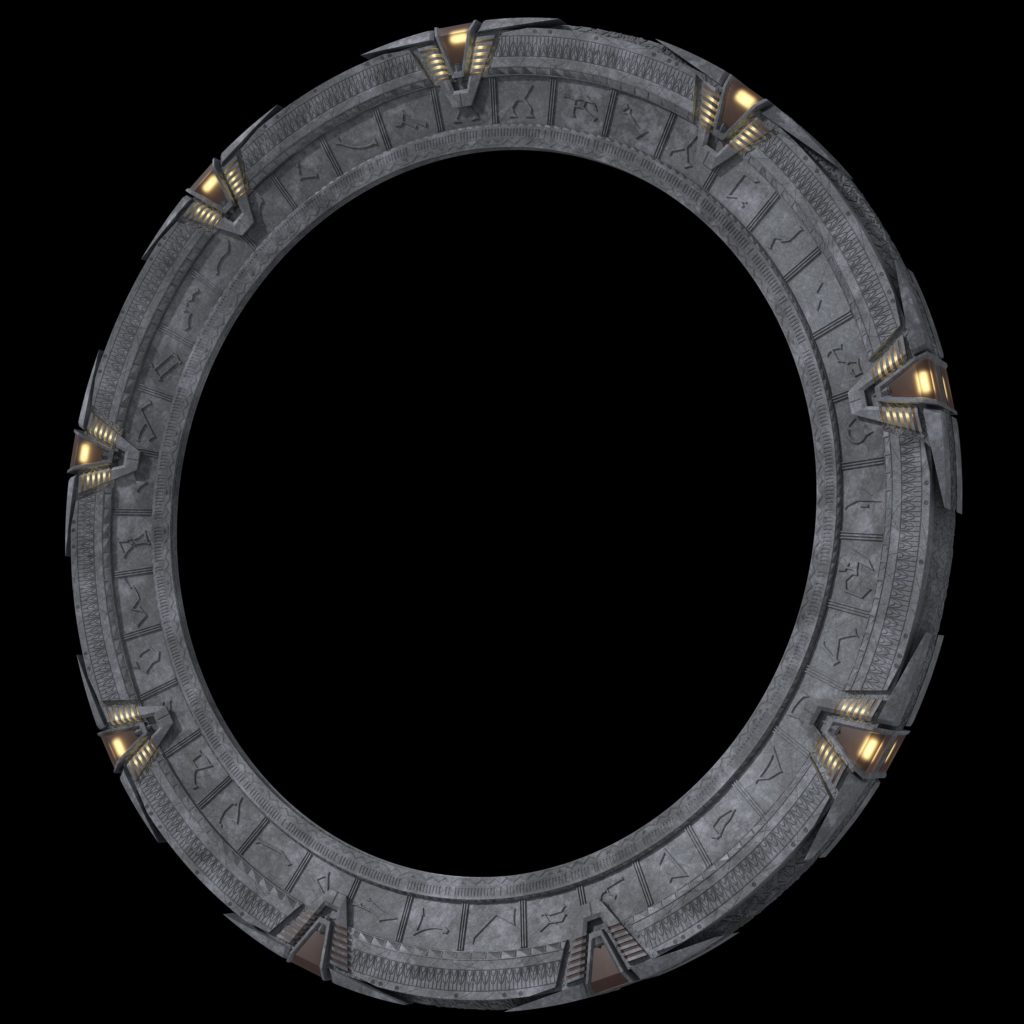
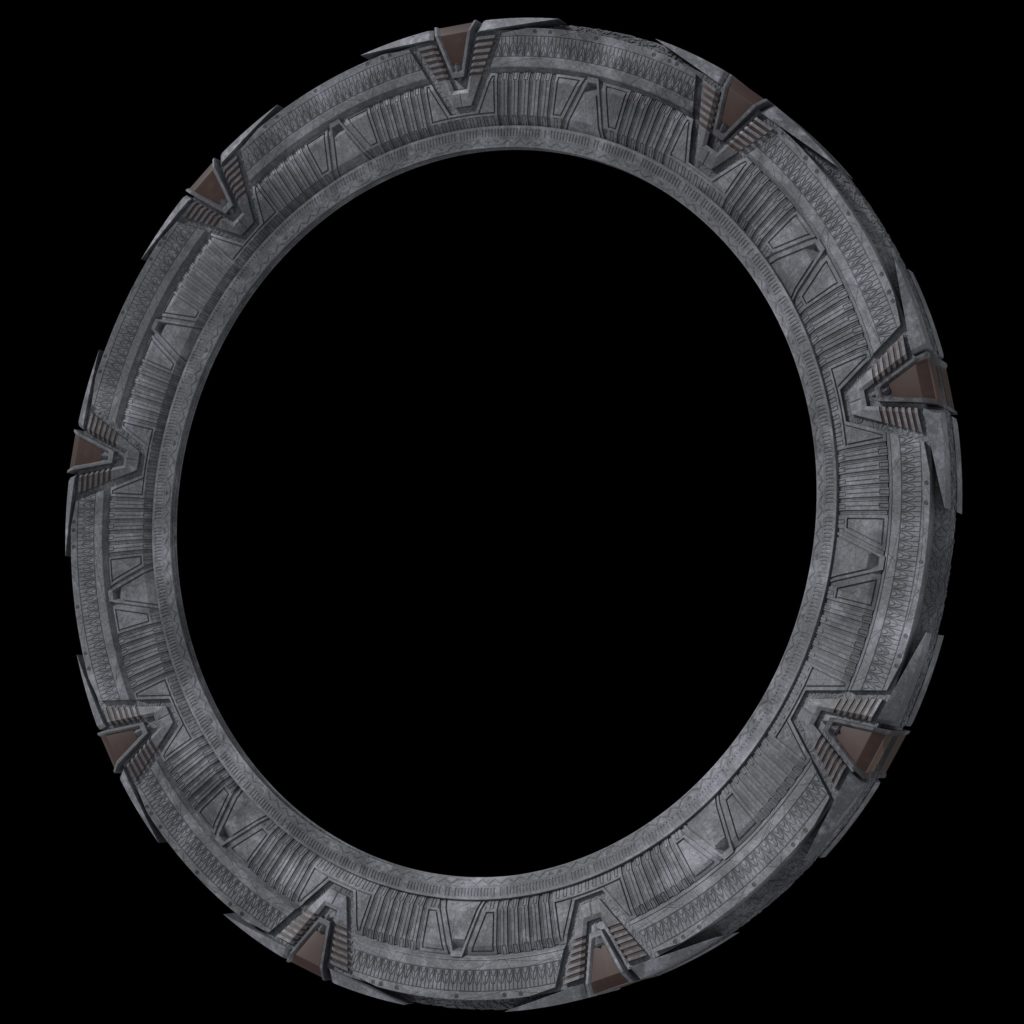
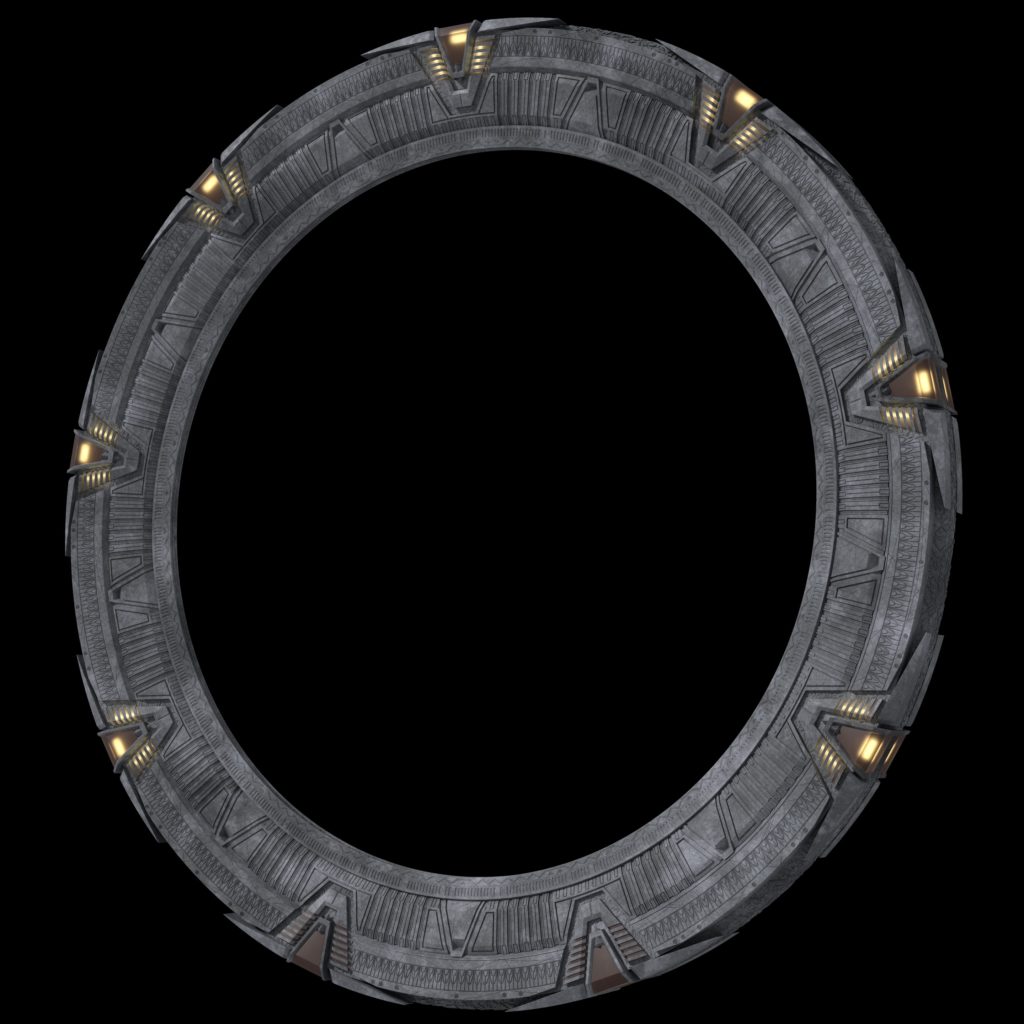
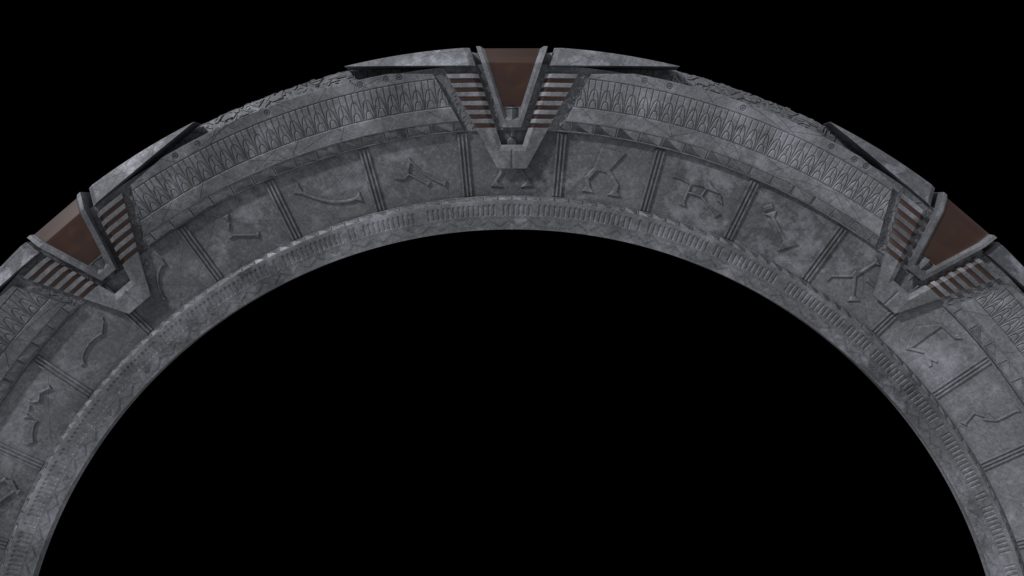
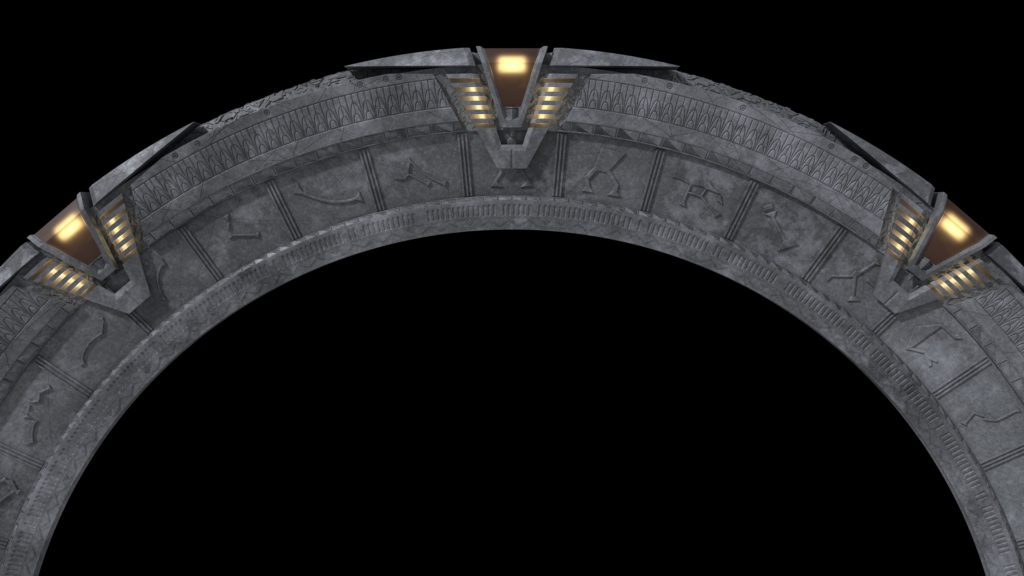
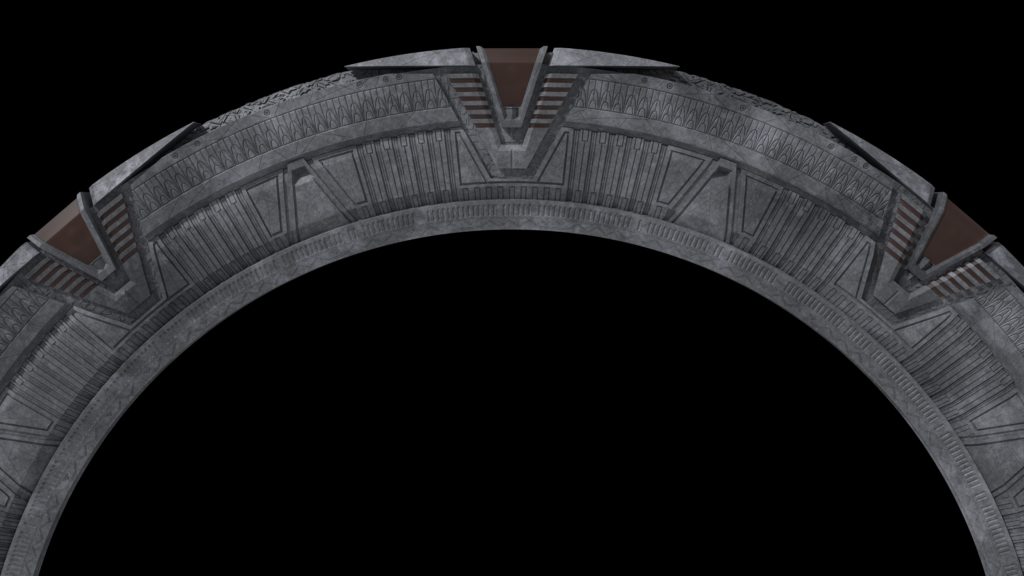
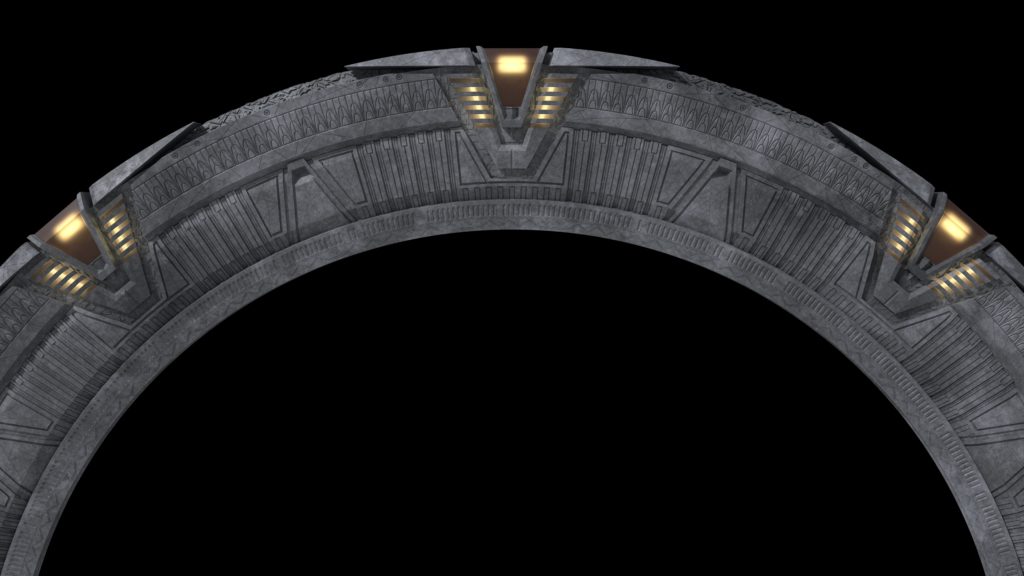
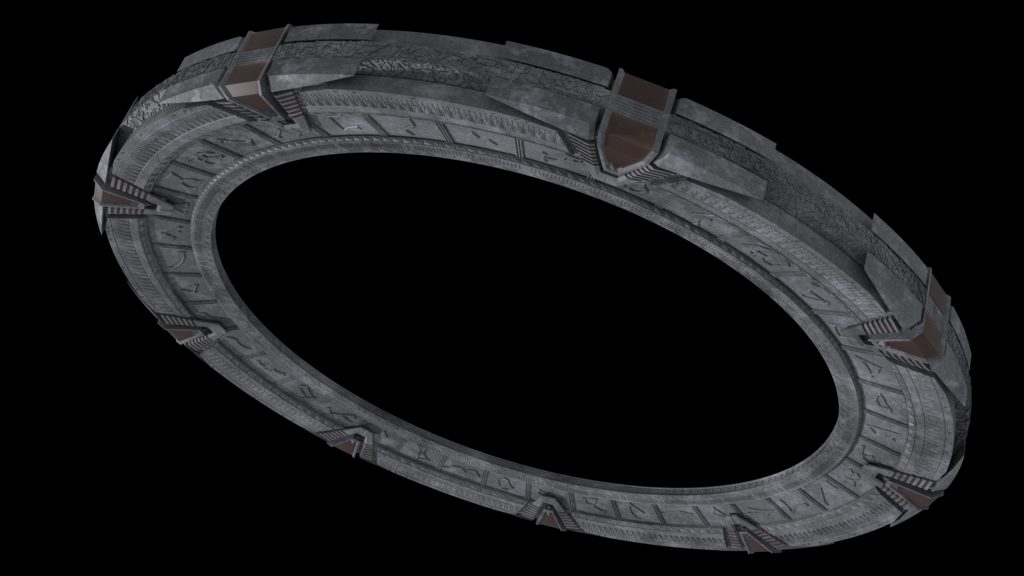
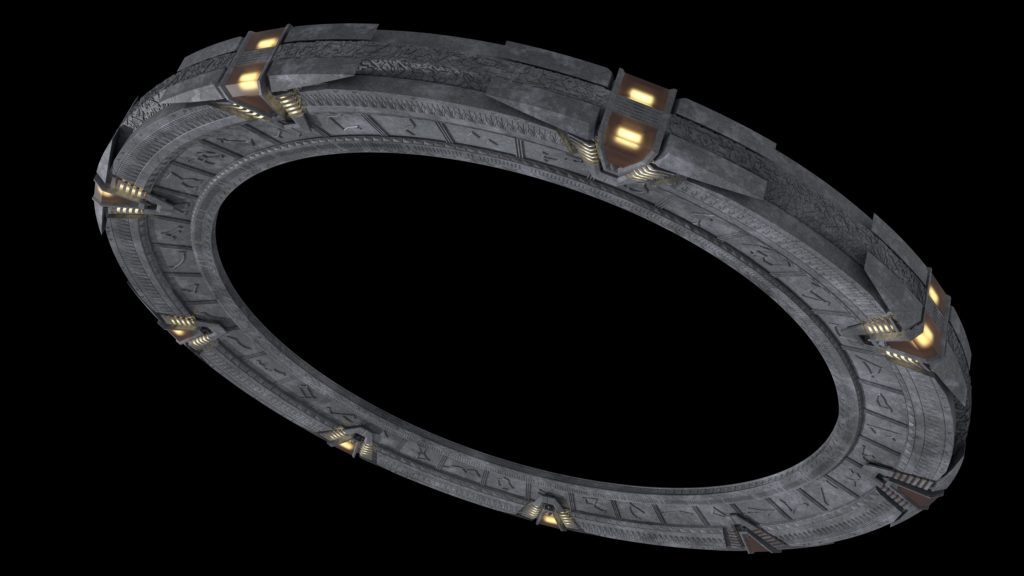
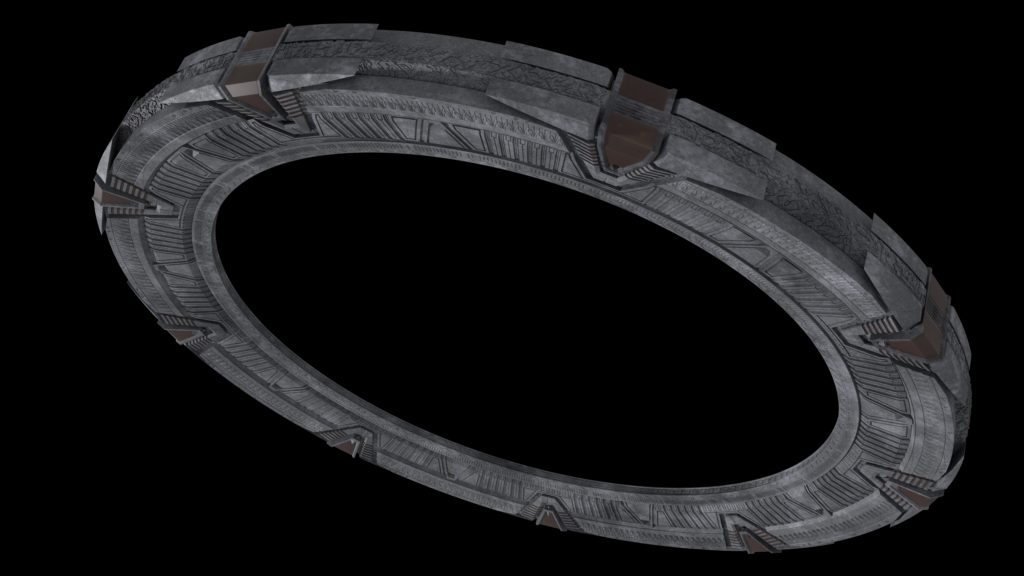

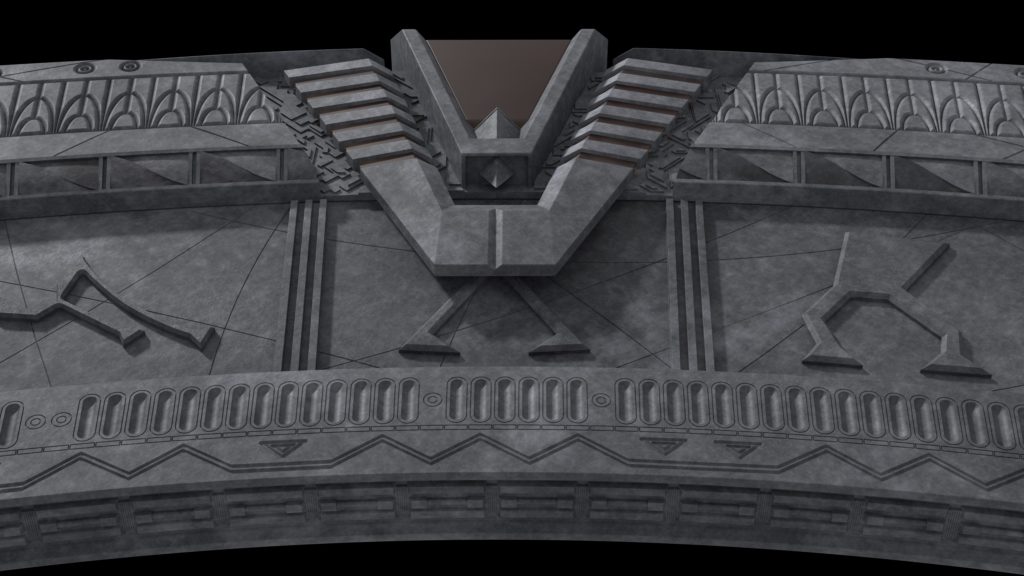
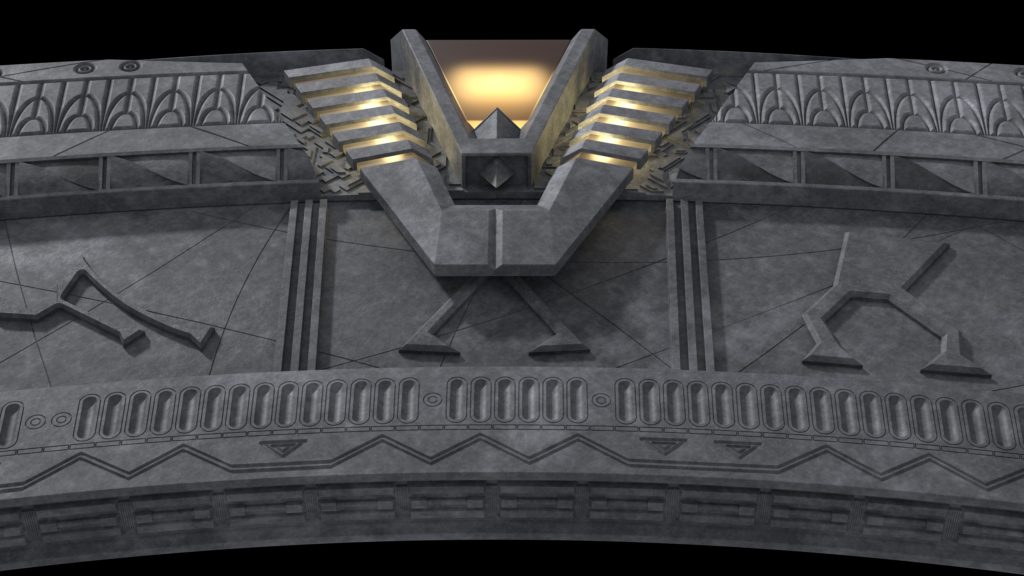
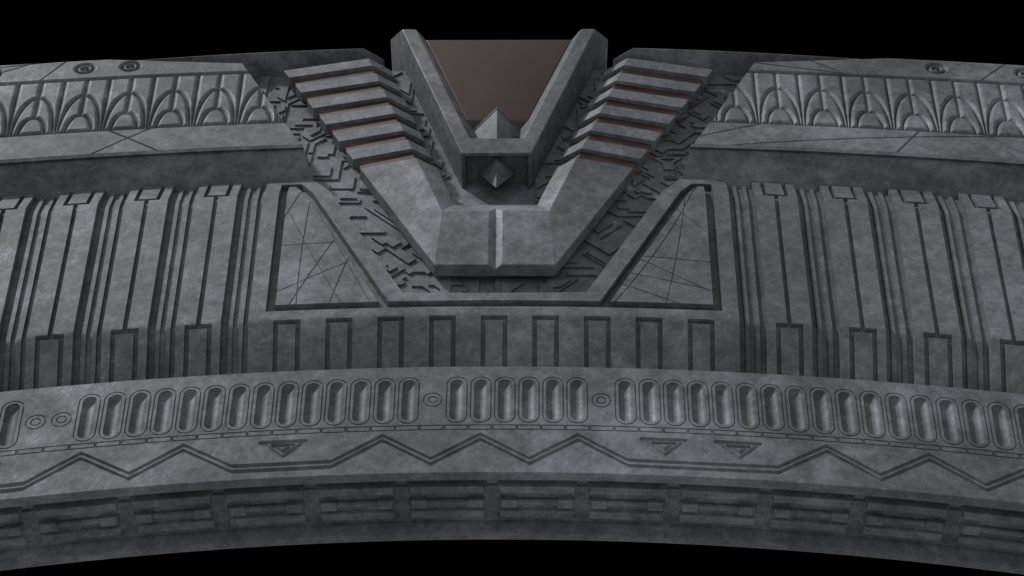
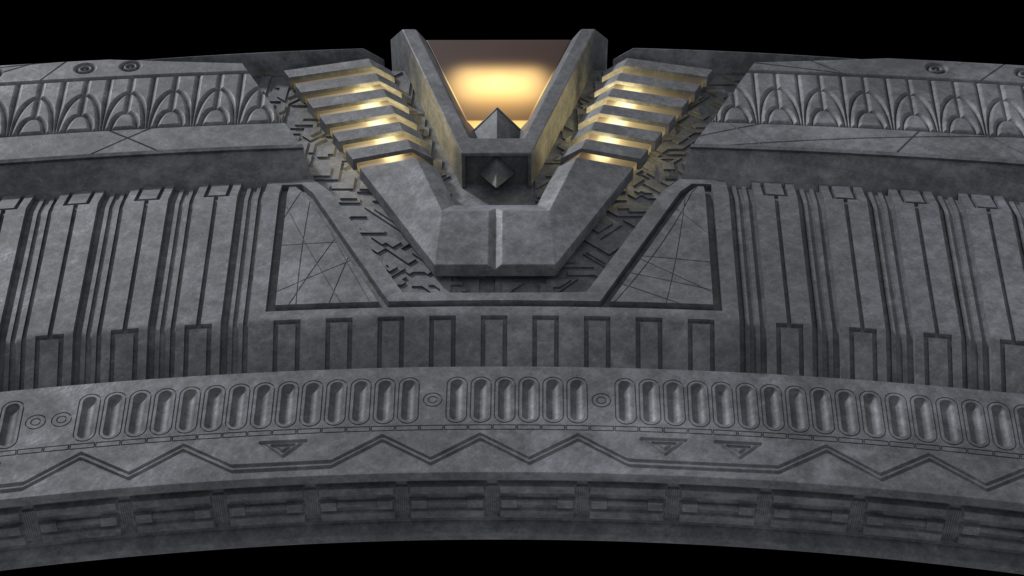
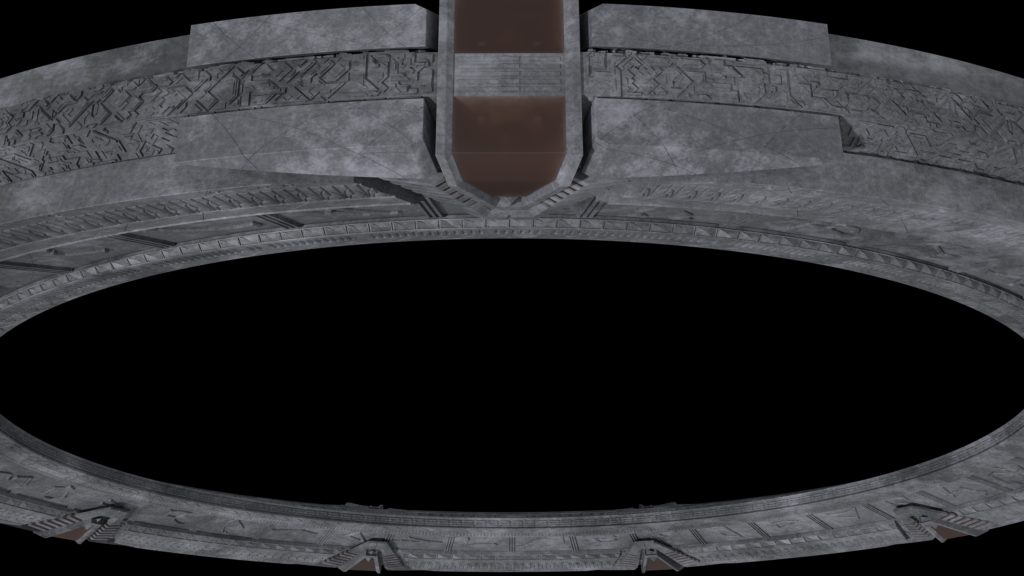
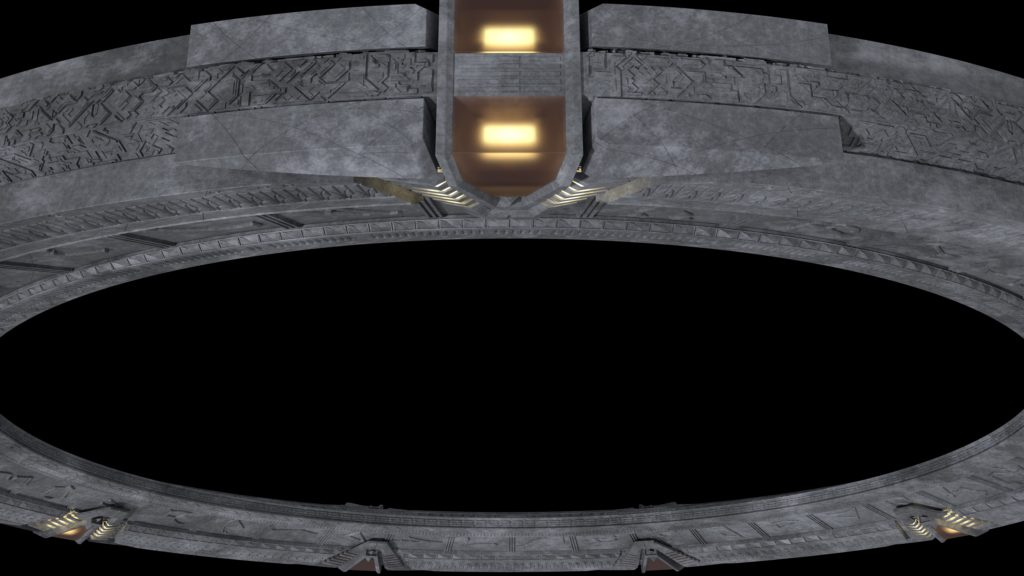
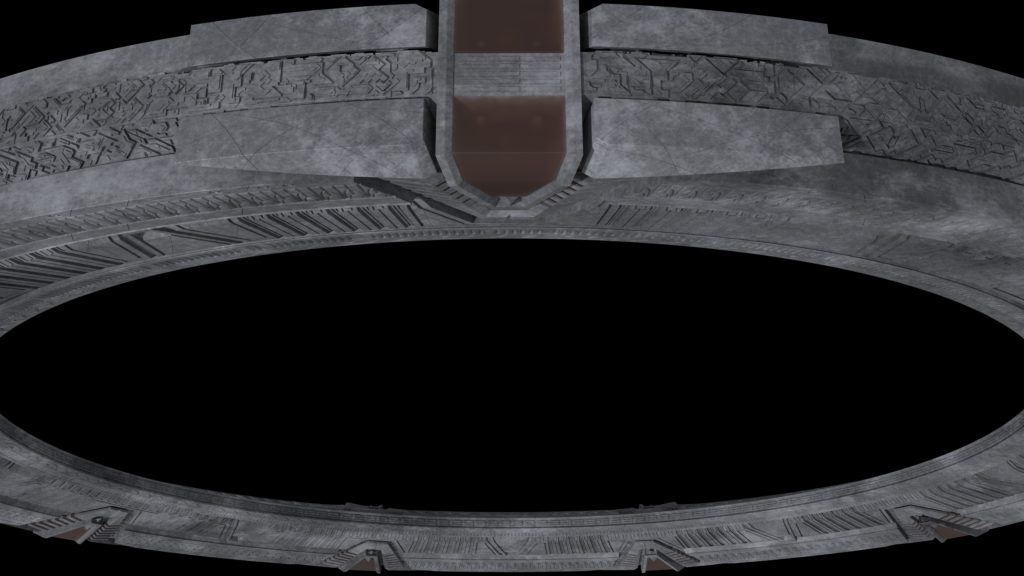
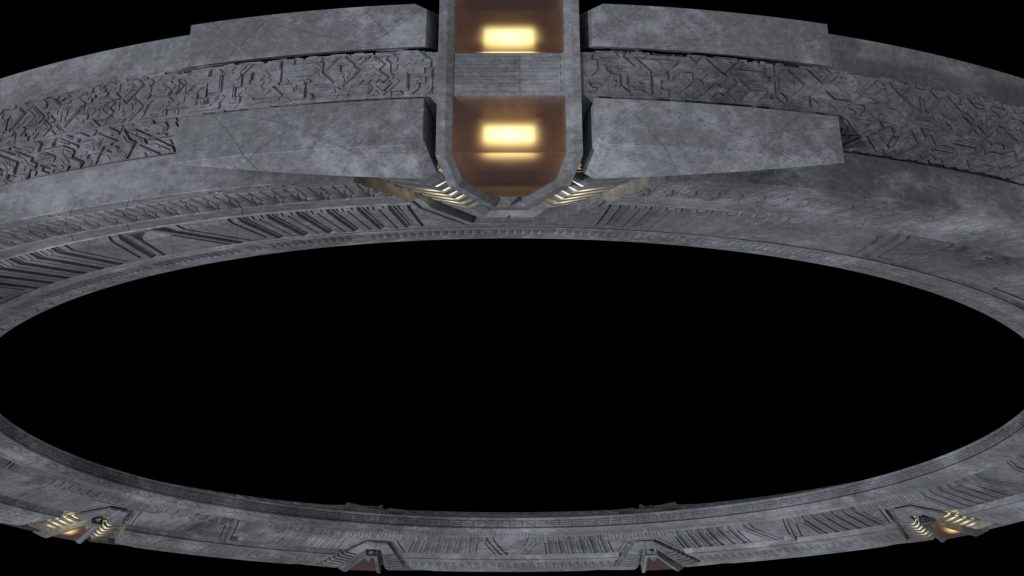
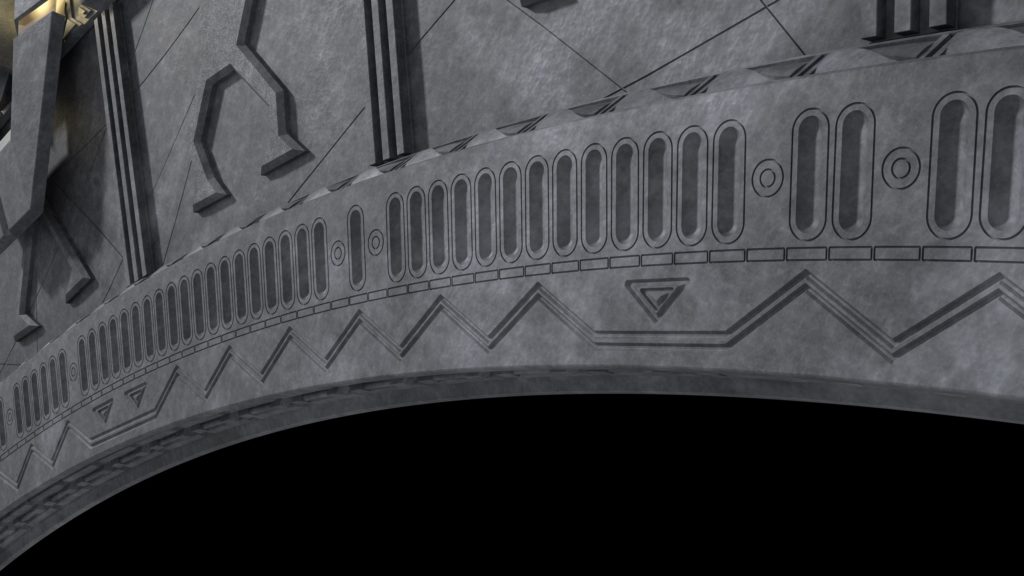
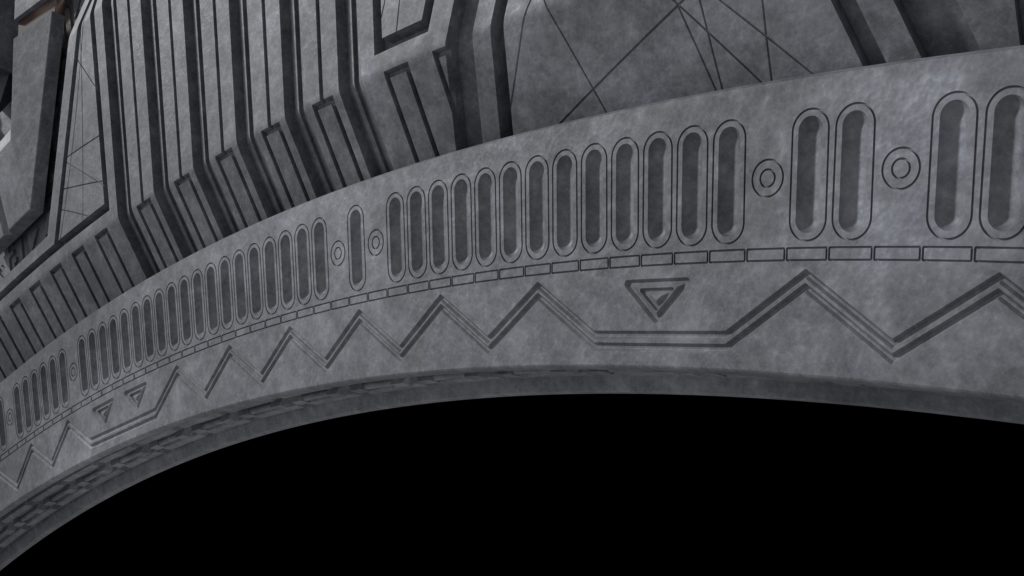
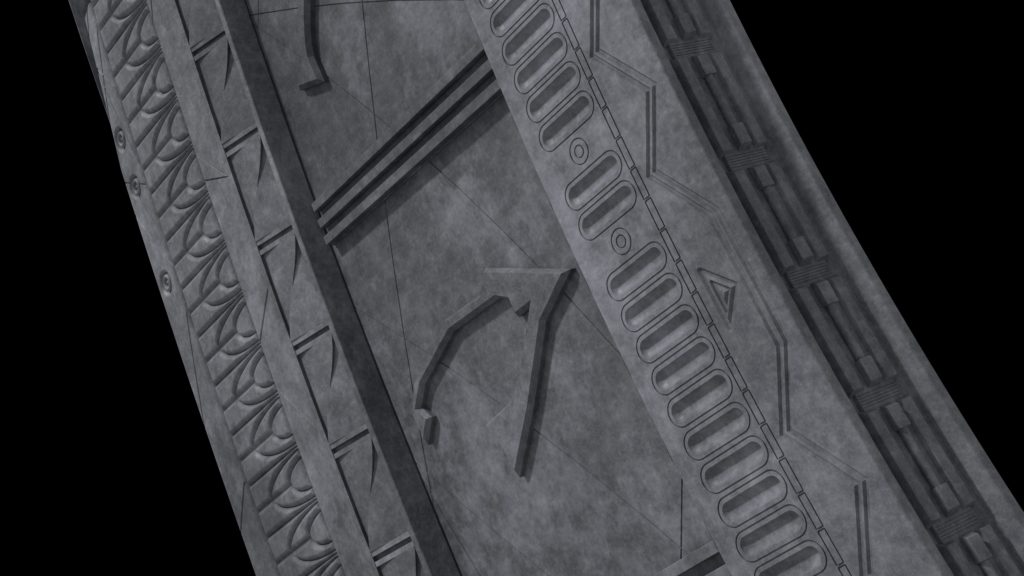
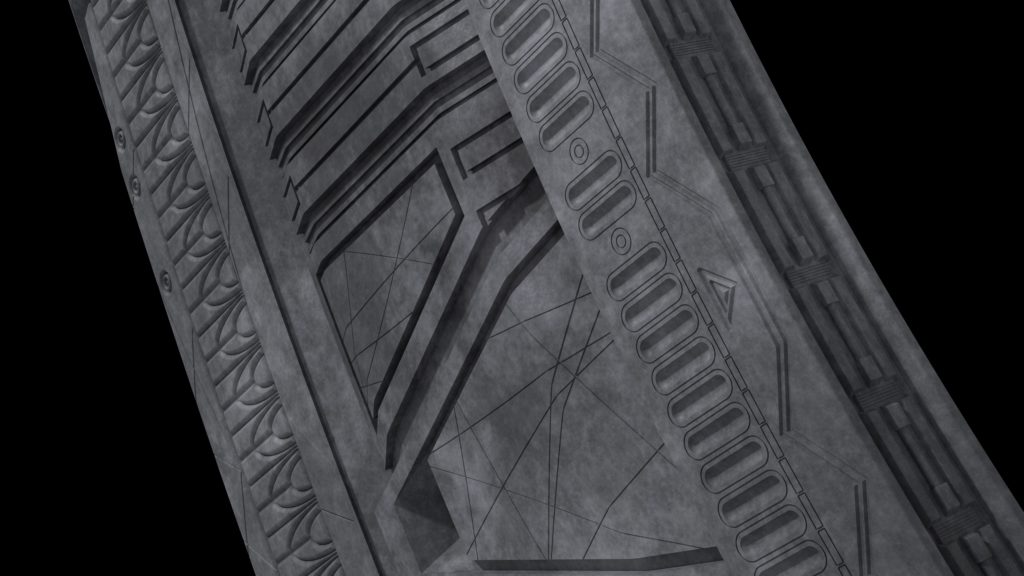
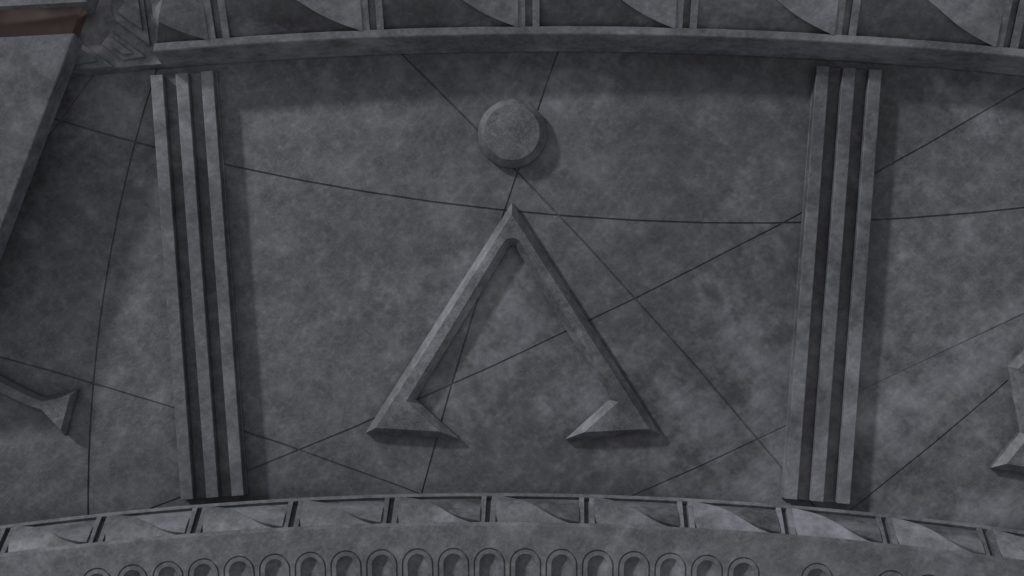
In addition to these still images under neutral lighting, I rendered a turntable animation of the model in many different lighting environments from HDRI Haven and HDR Labs, to see how my texturing job responded to a variety of different lighting situations. I’ve also rendered 5K wallpaper versions of the front and back of the stargate in each lighting environment.
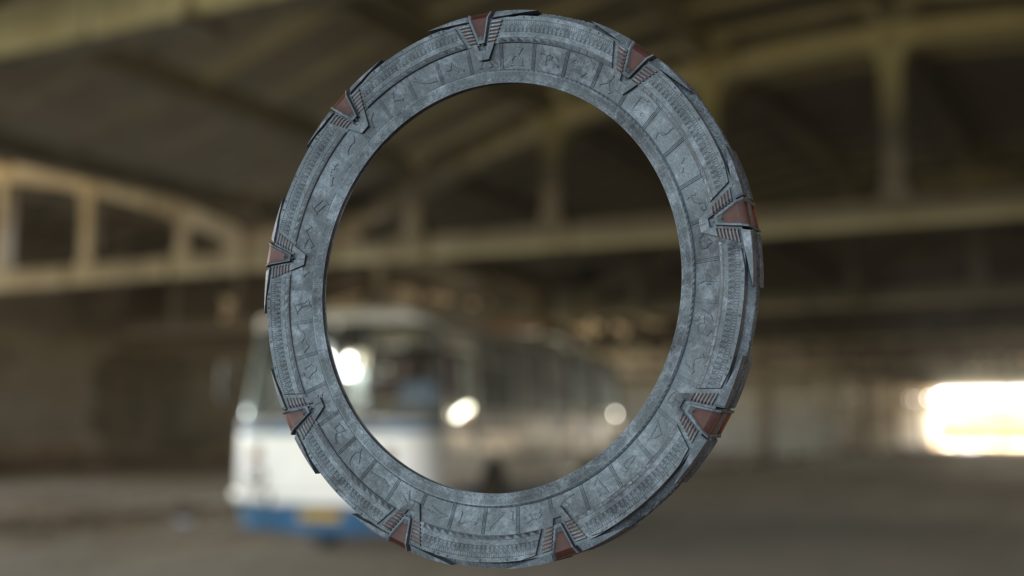
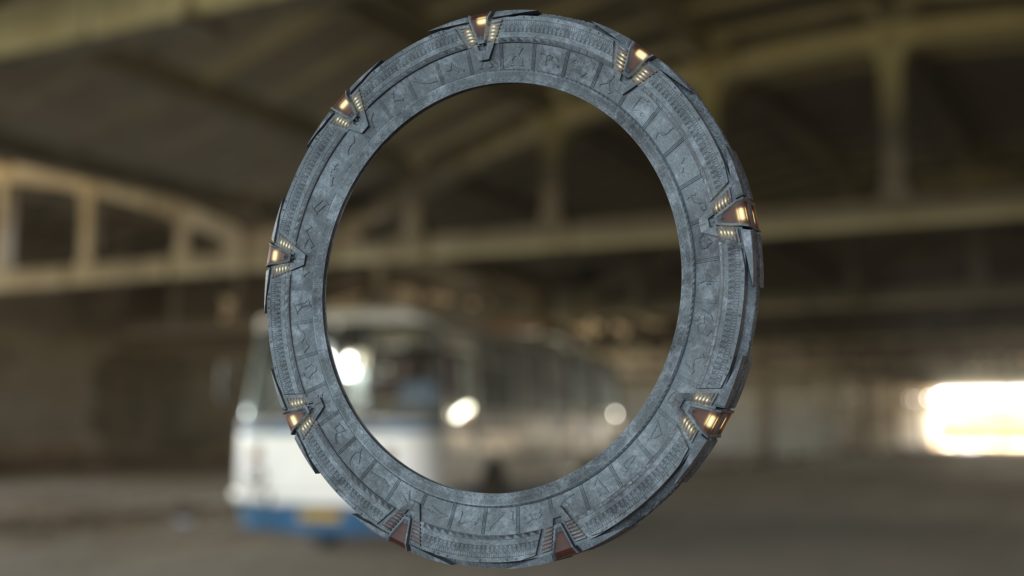
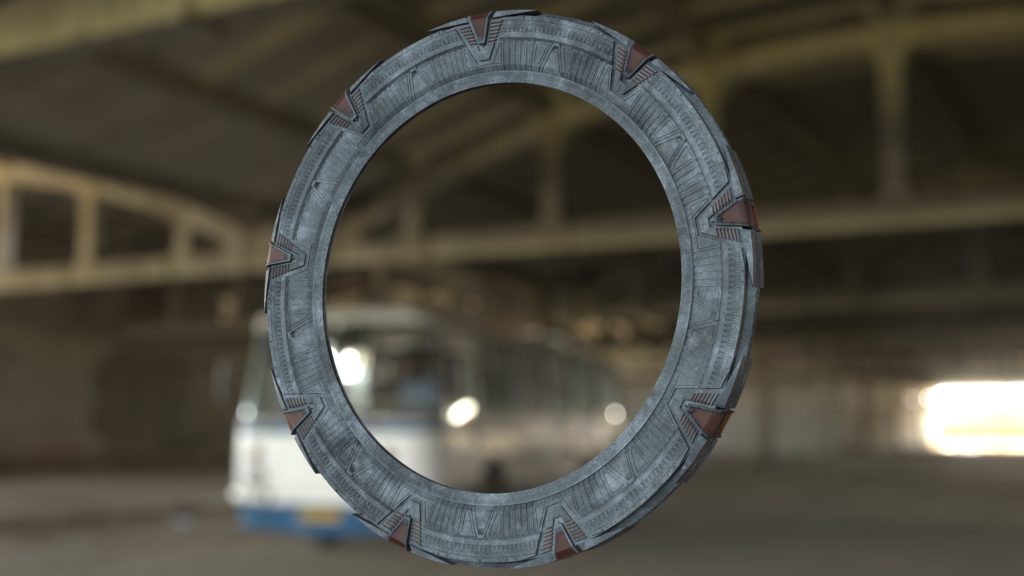
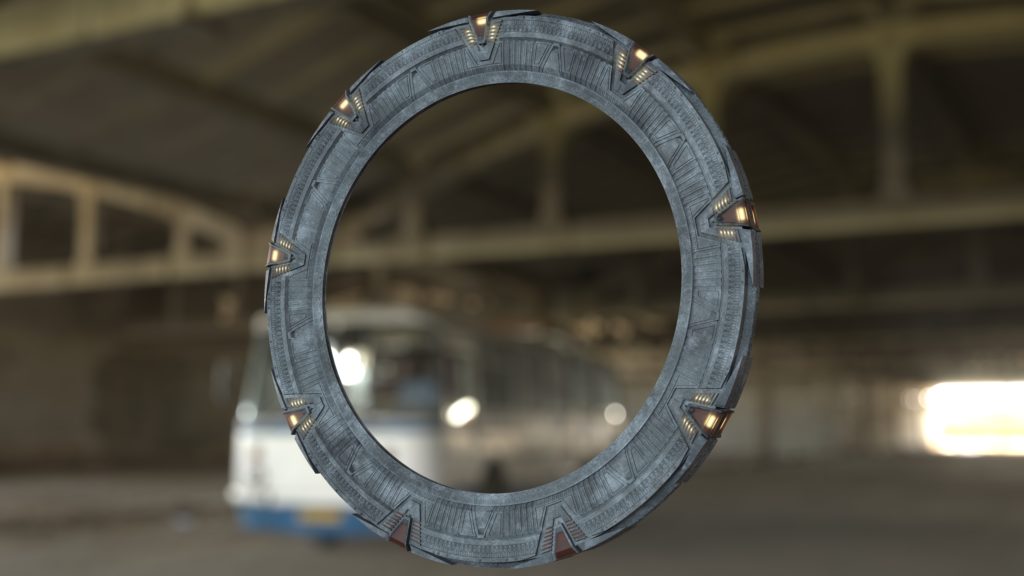
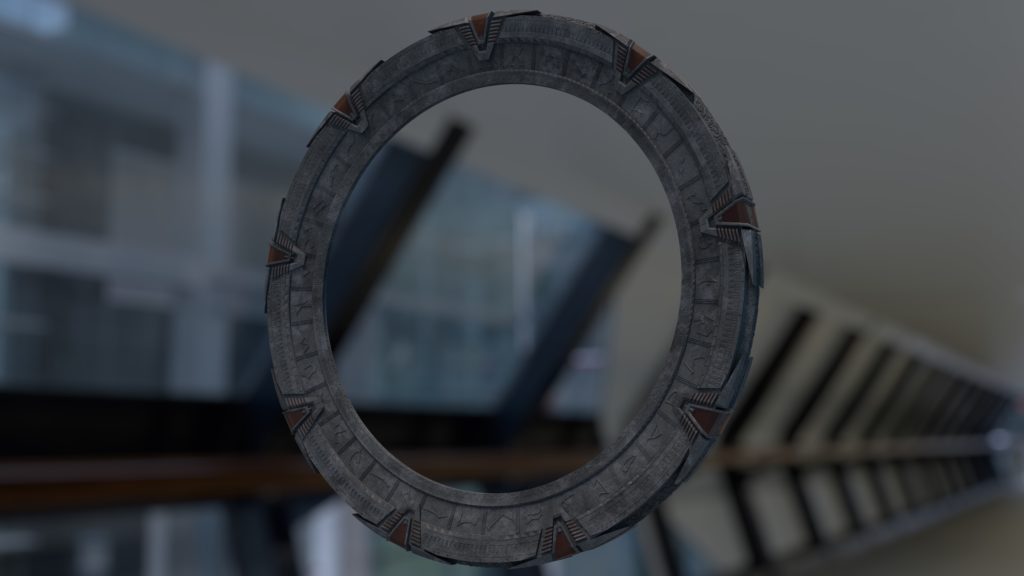
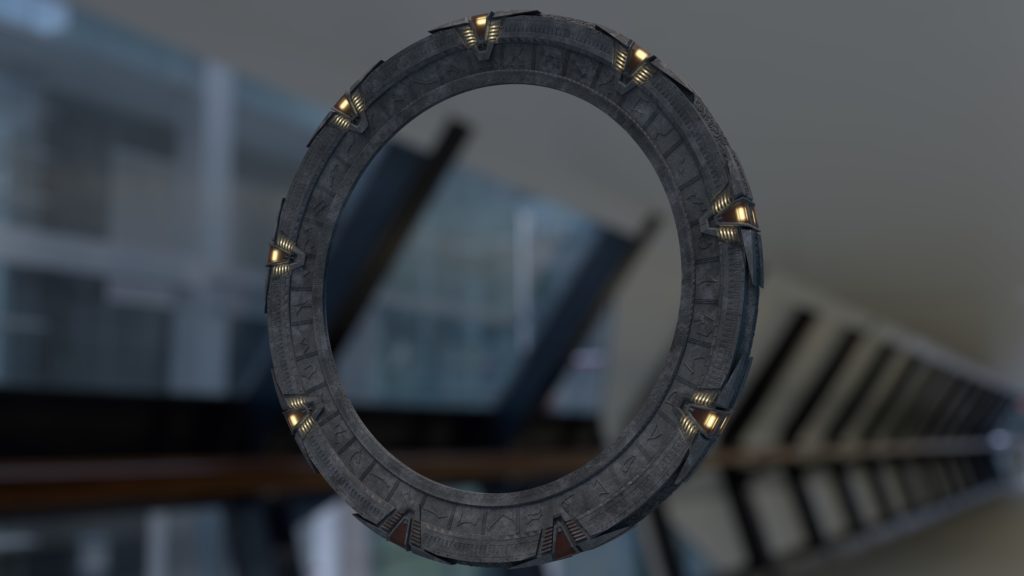
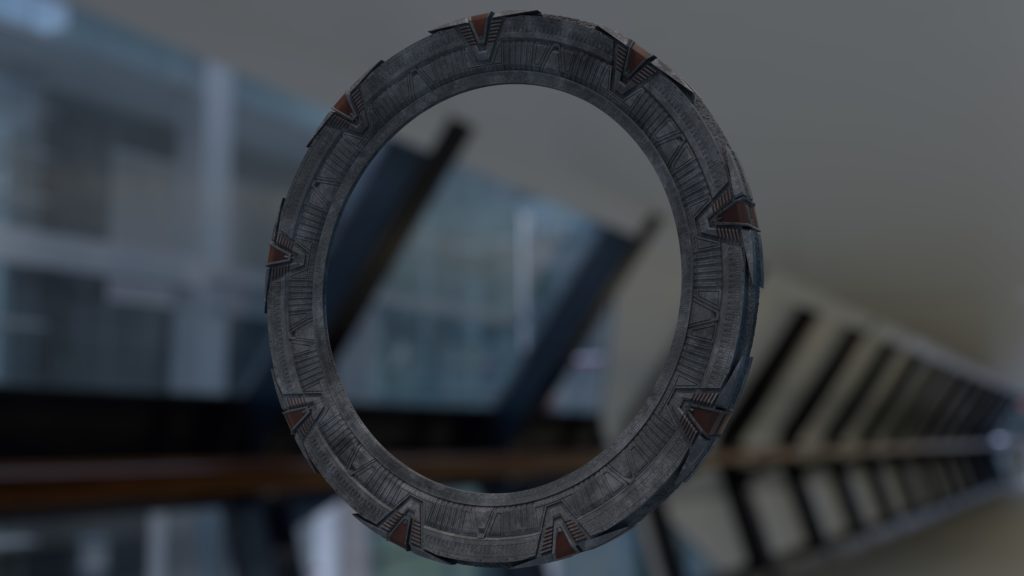
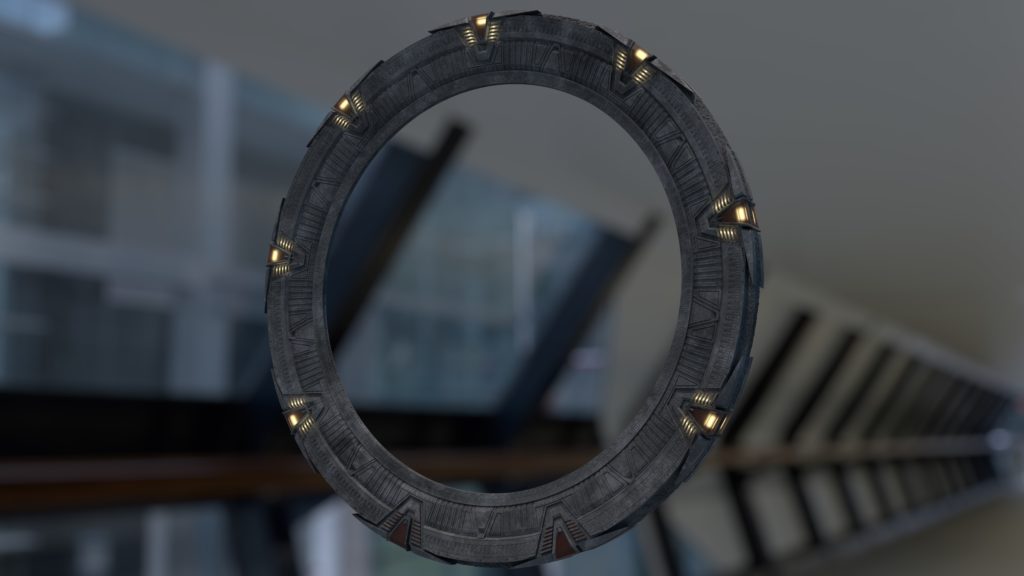
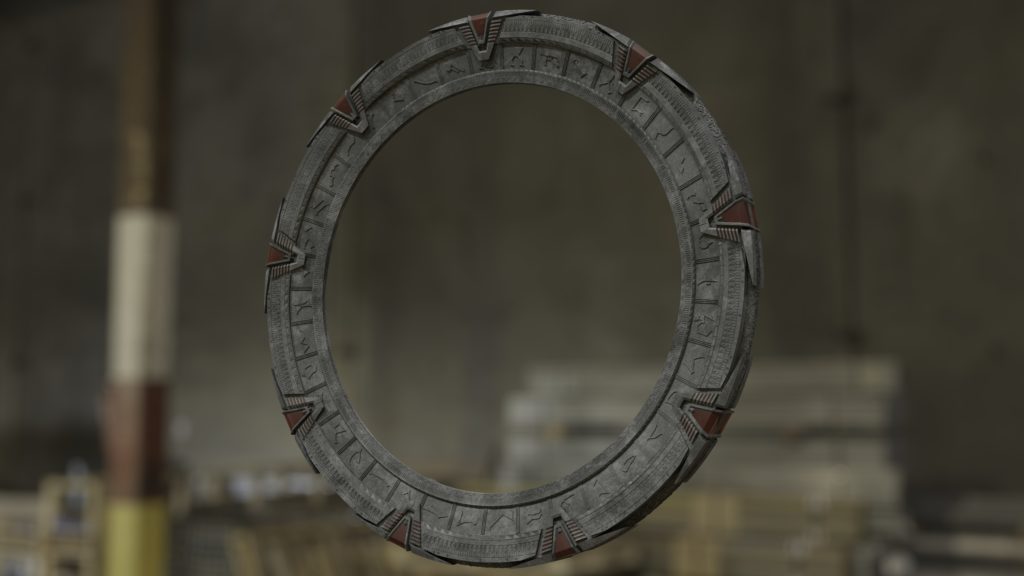
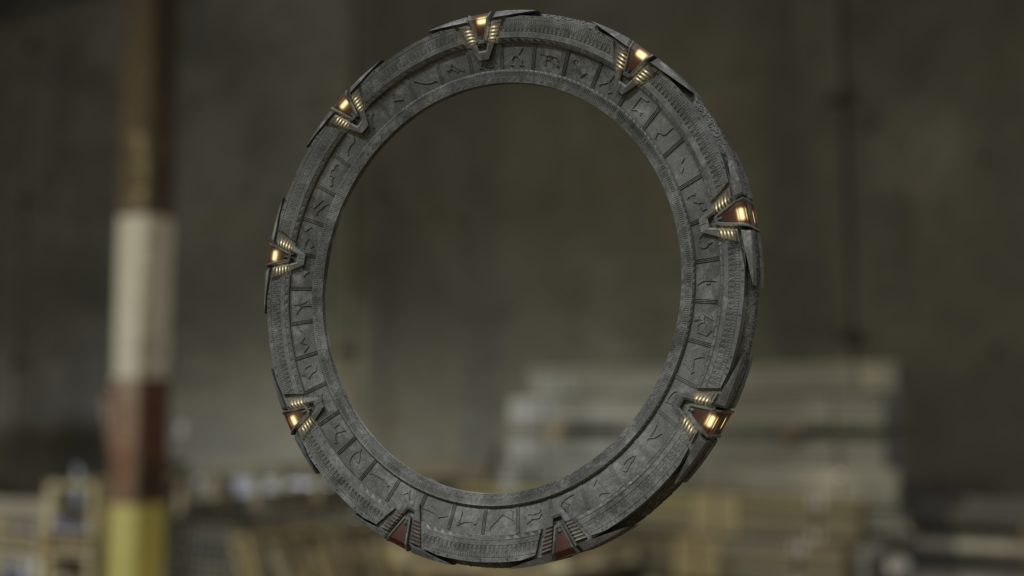
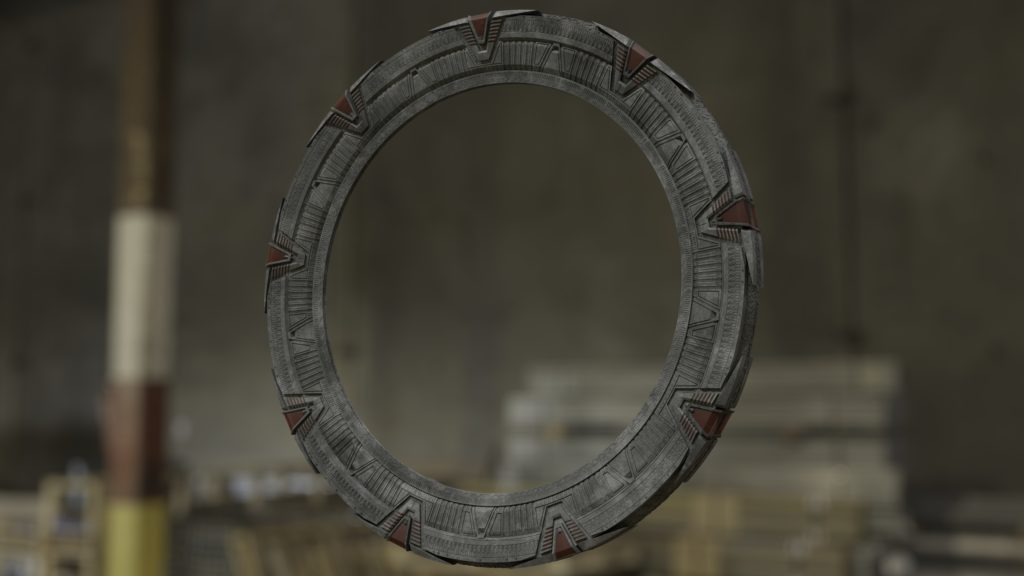
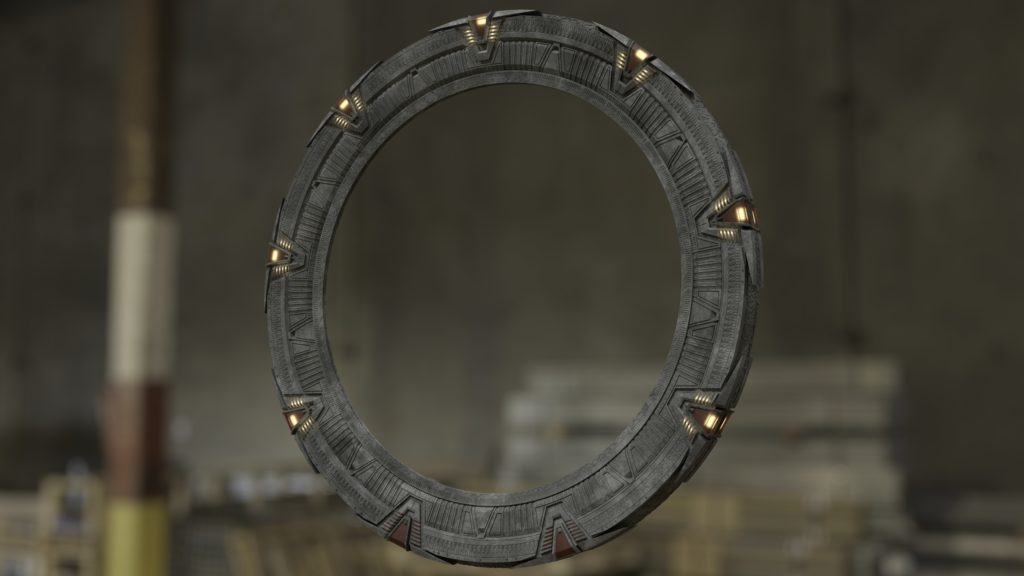
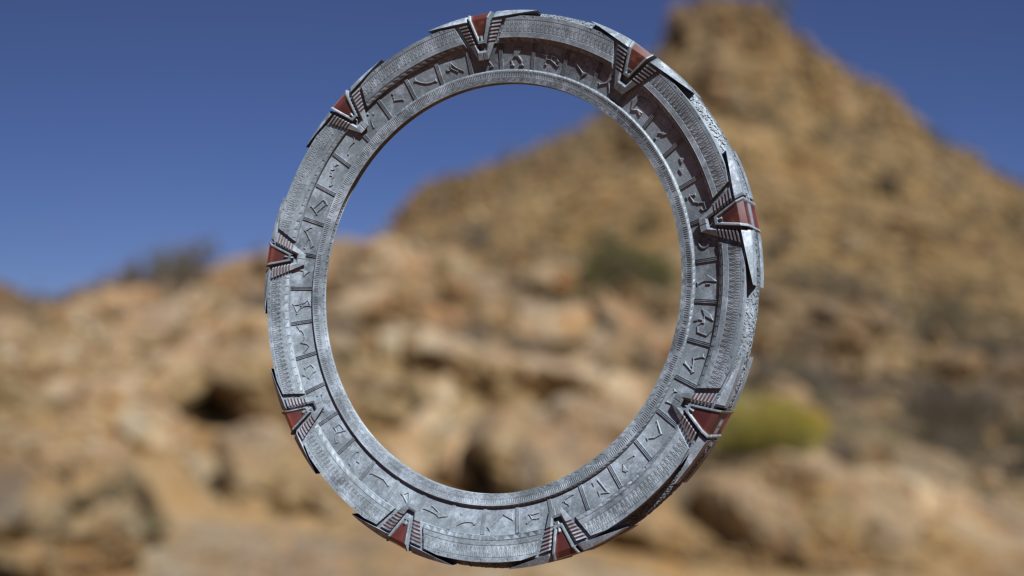
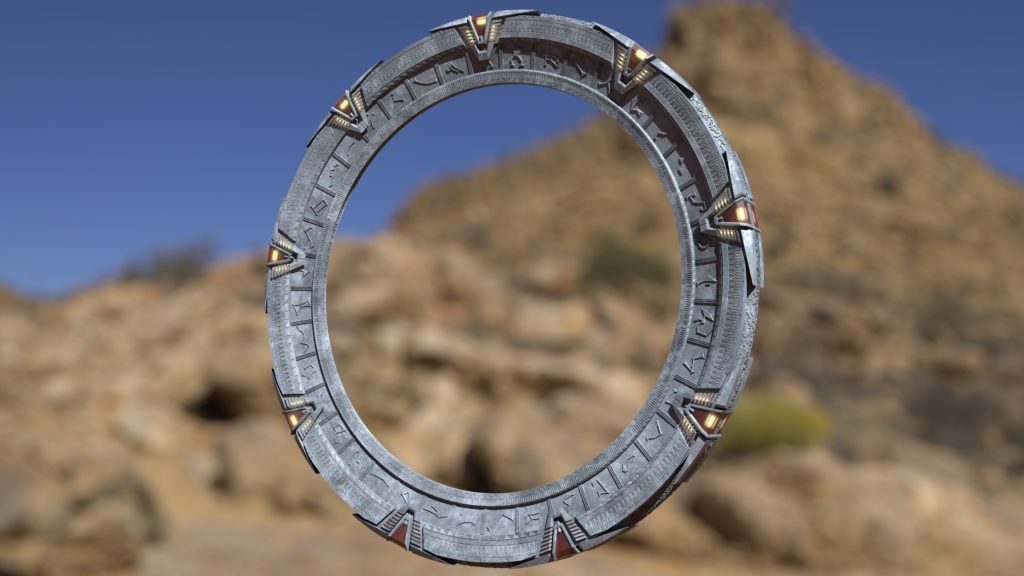
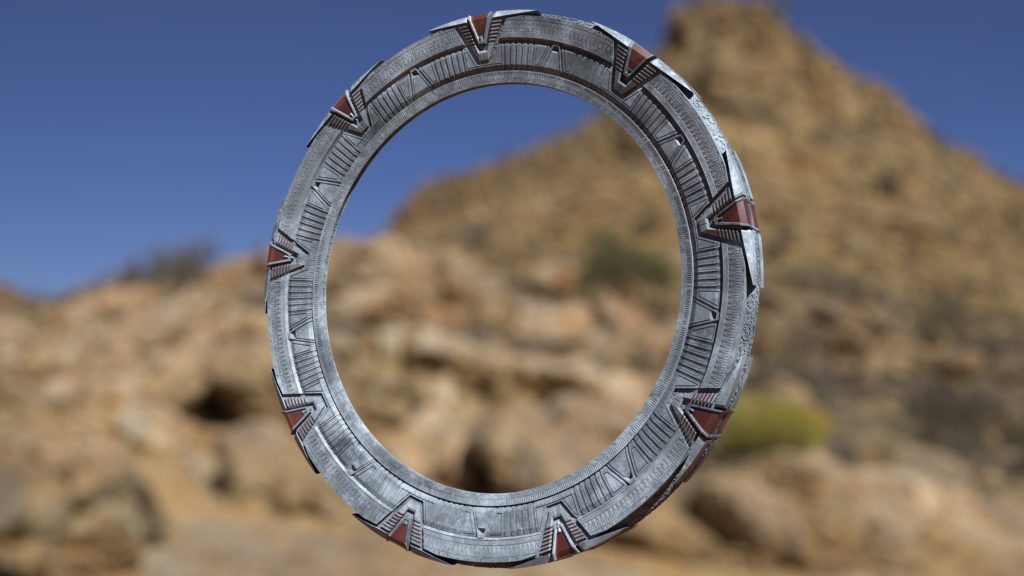
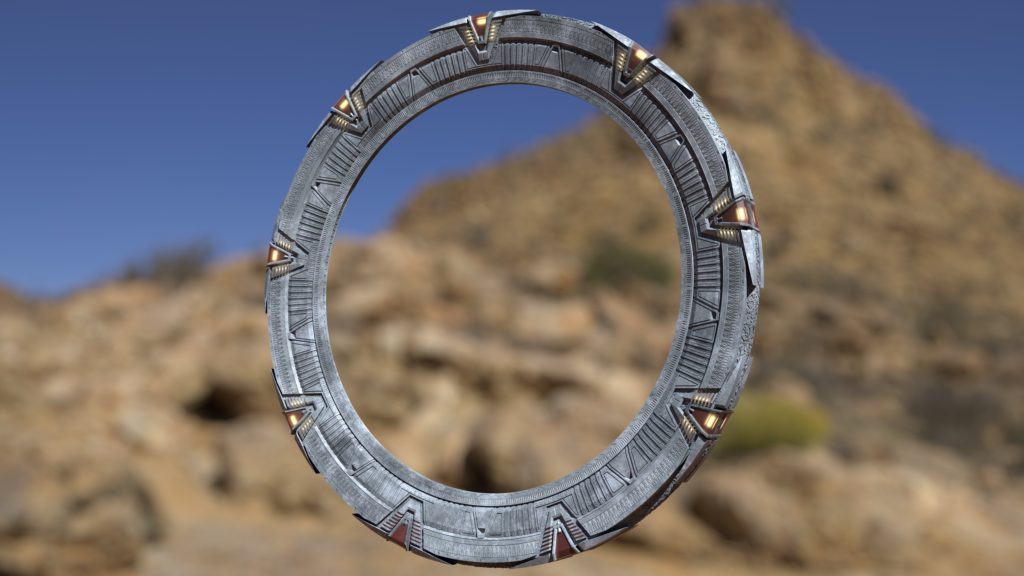
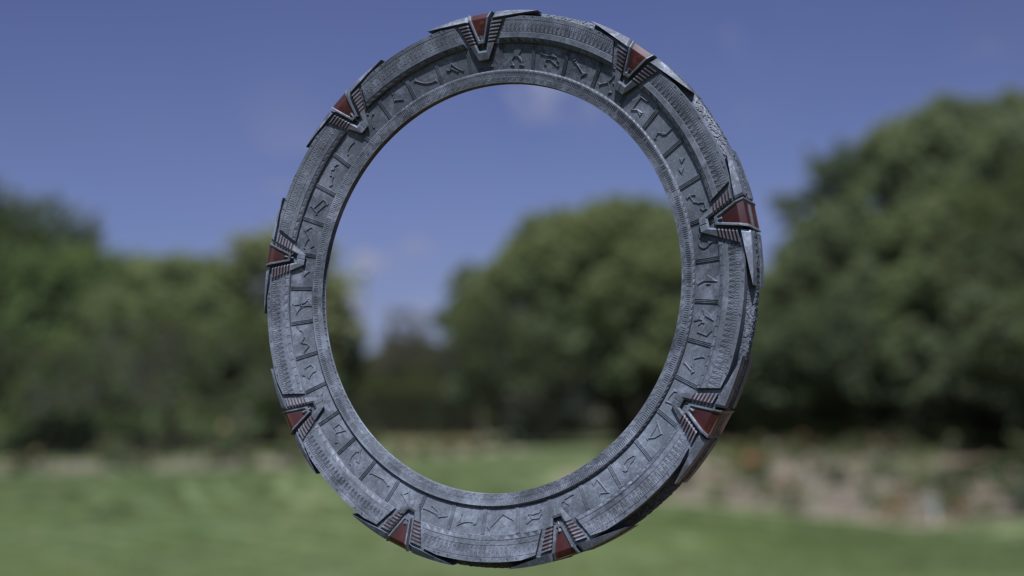
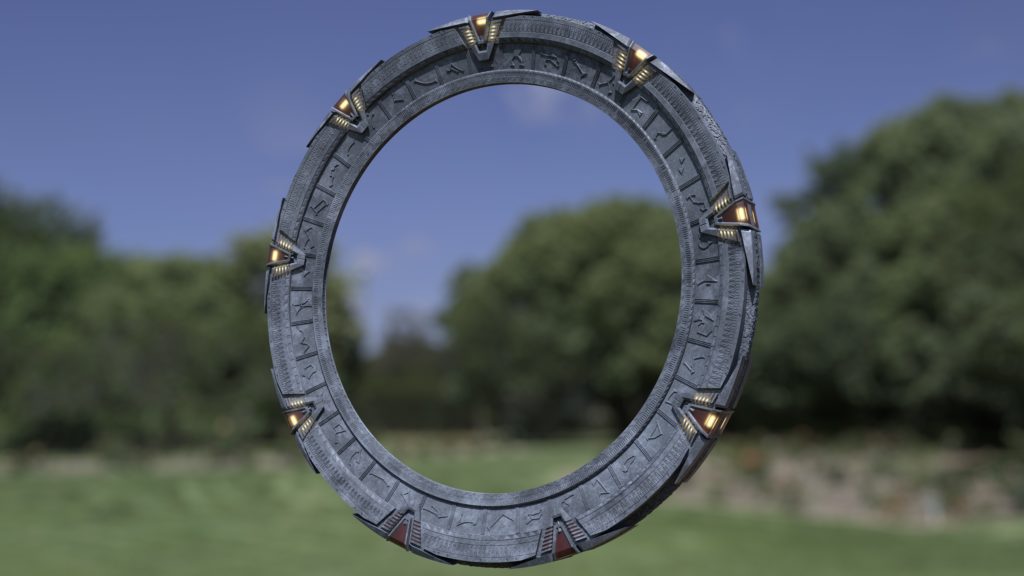
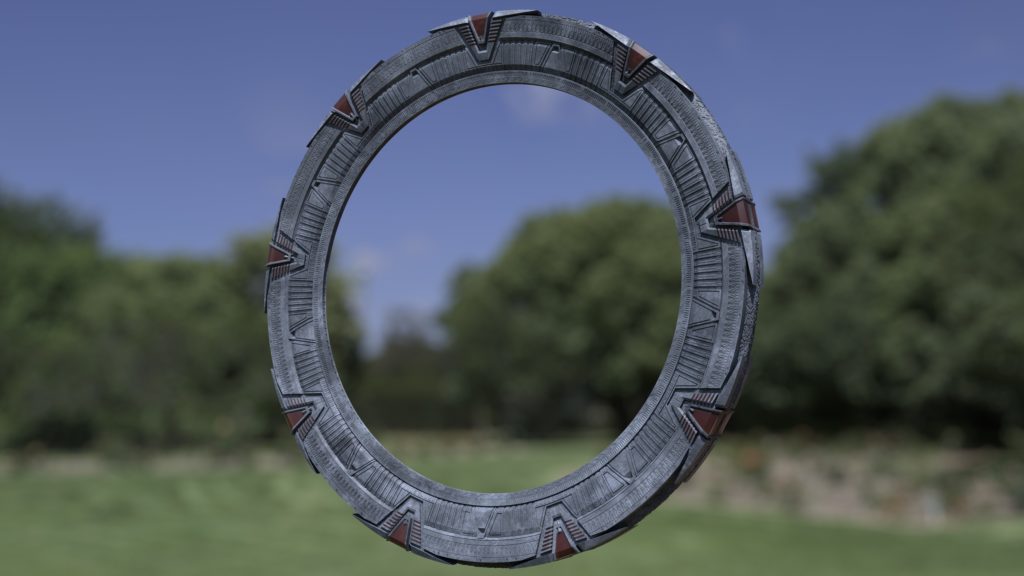
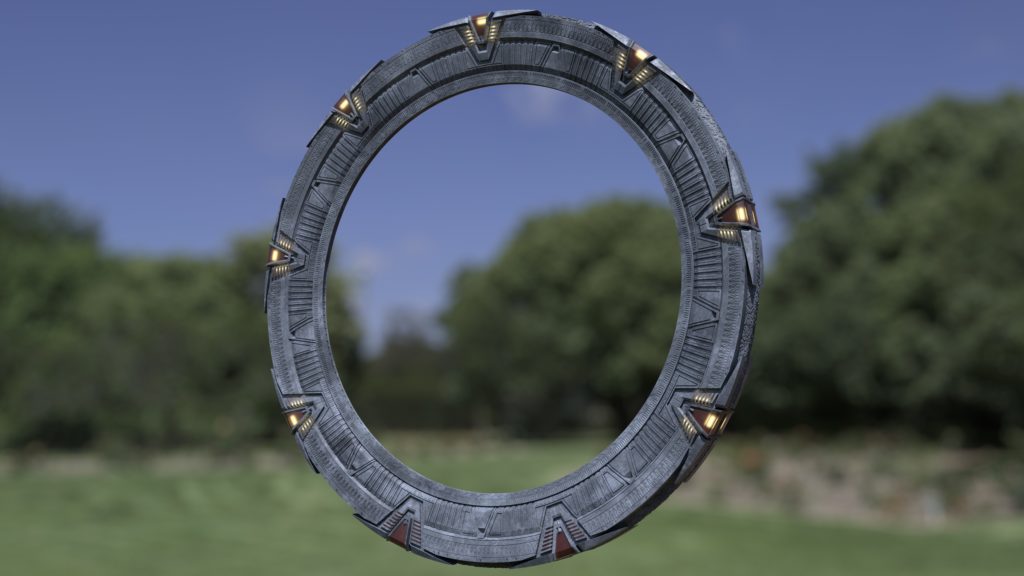
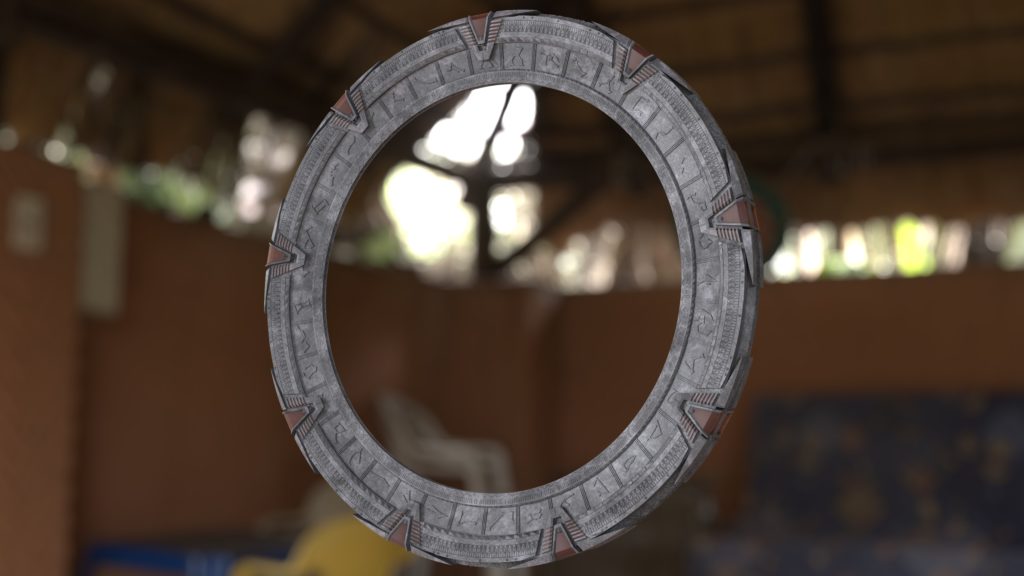
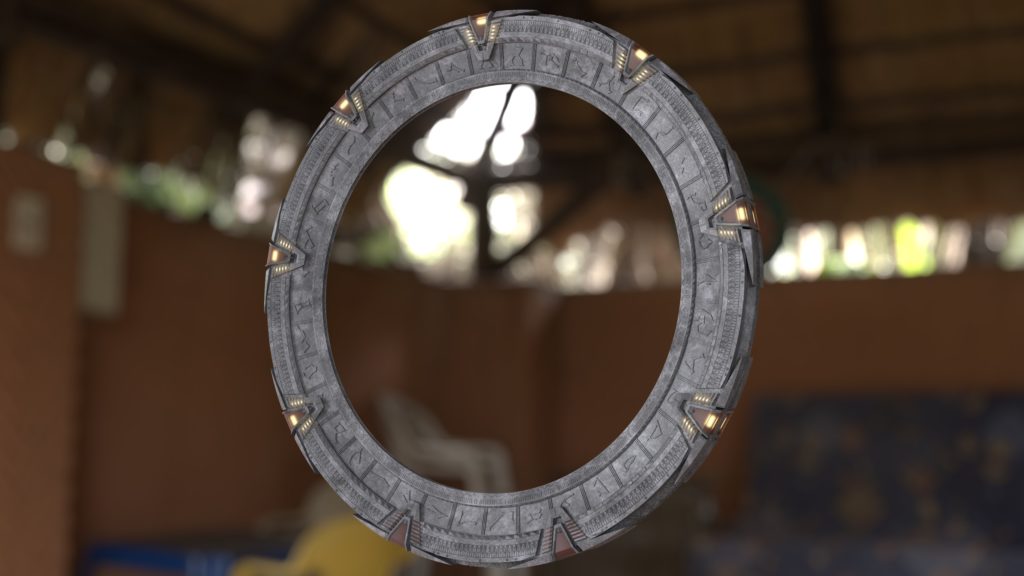
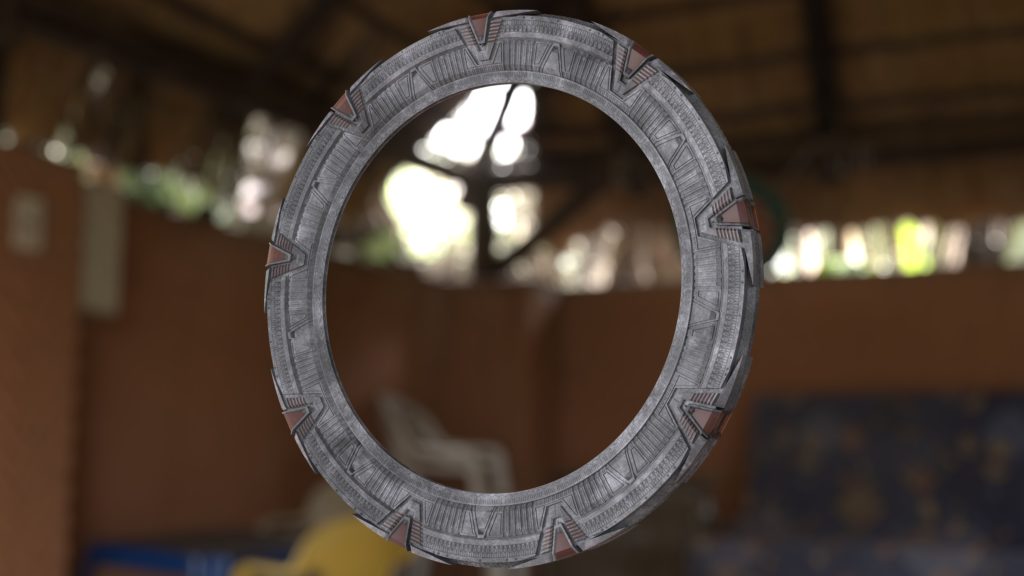
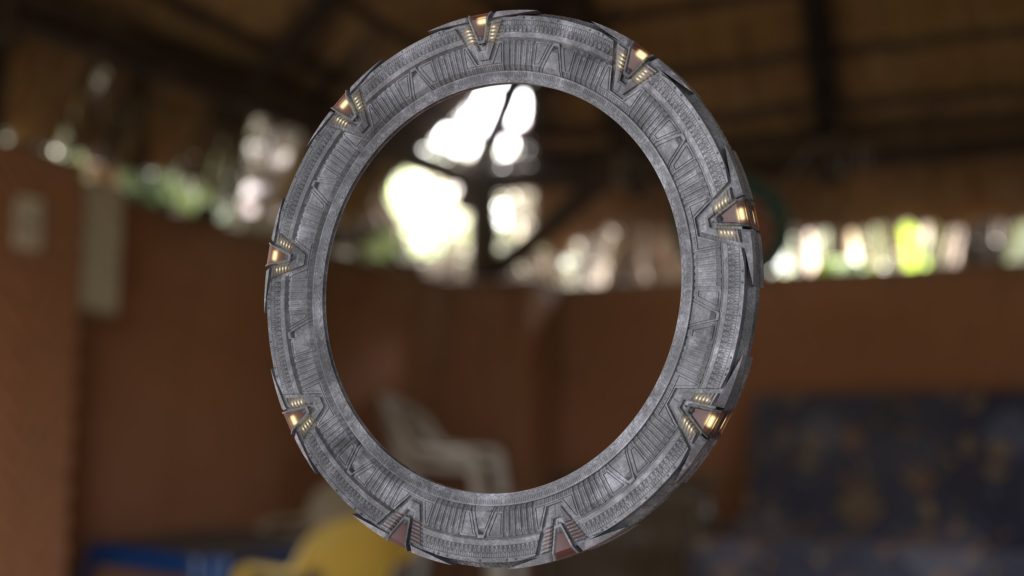
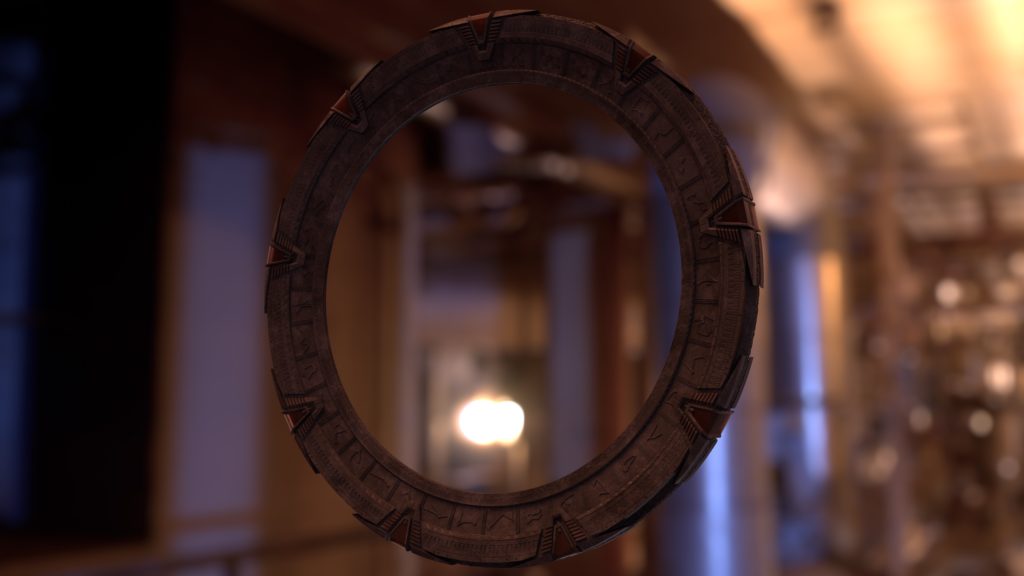
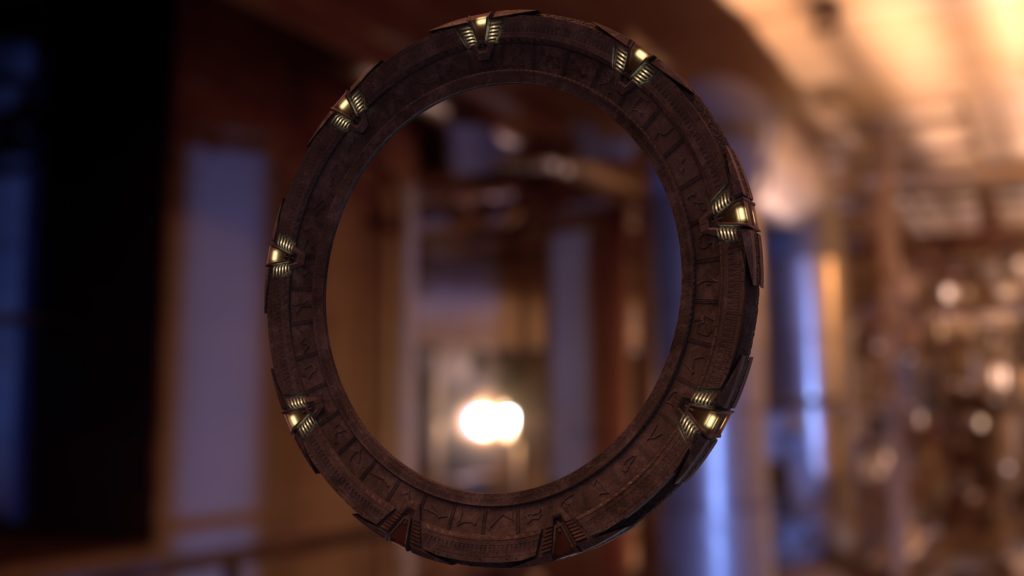
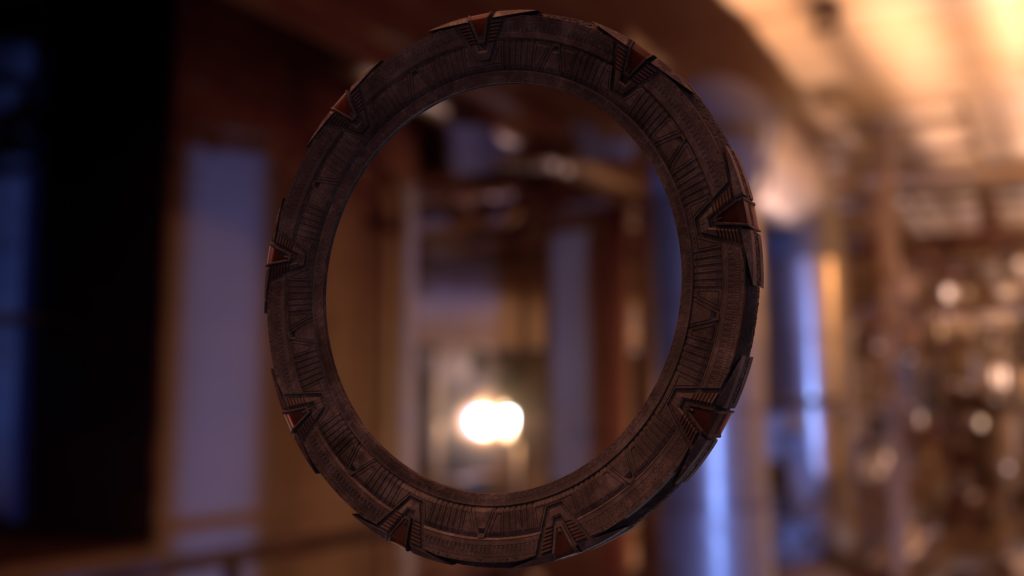
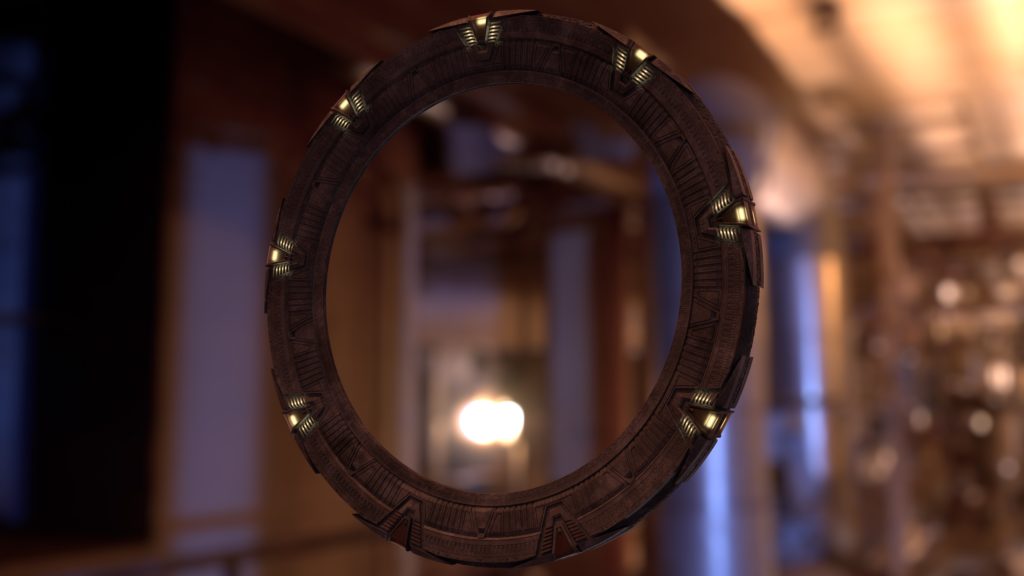
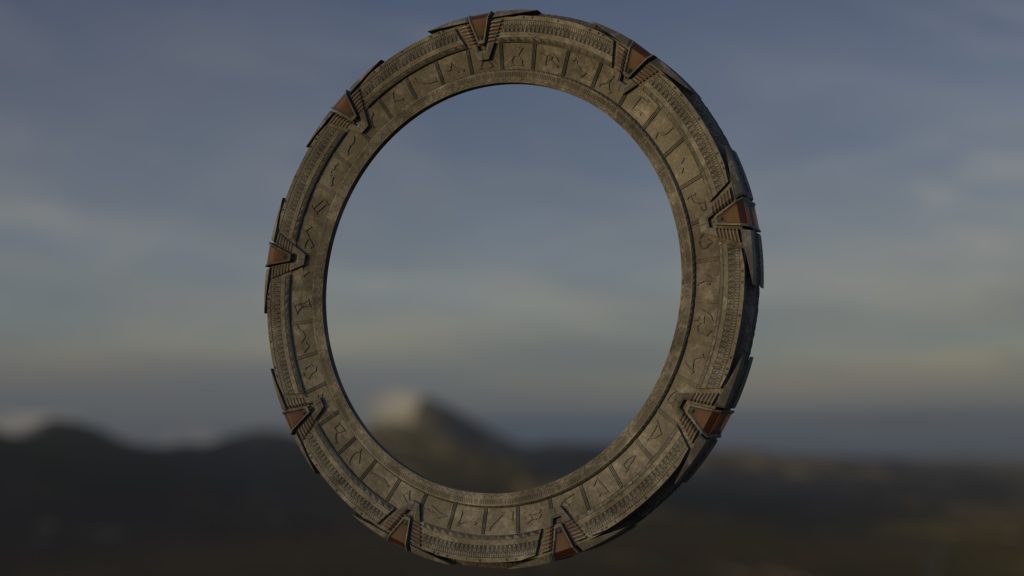
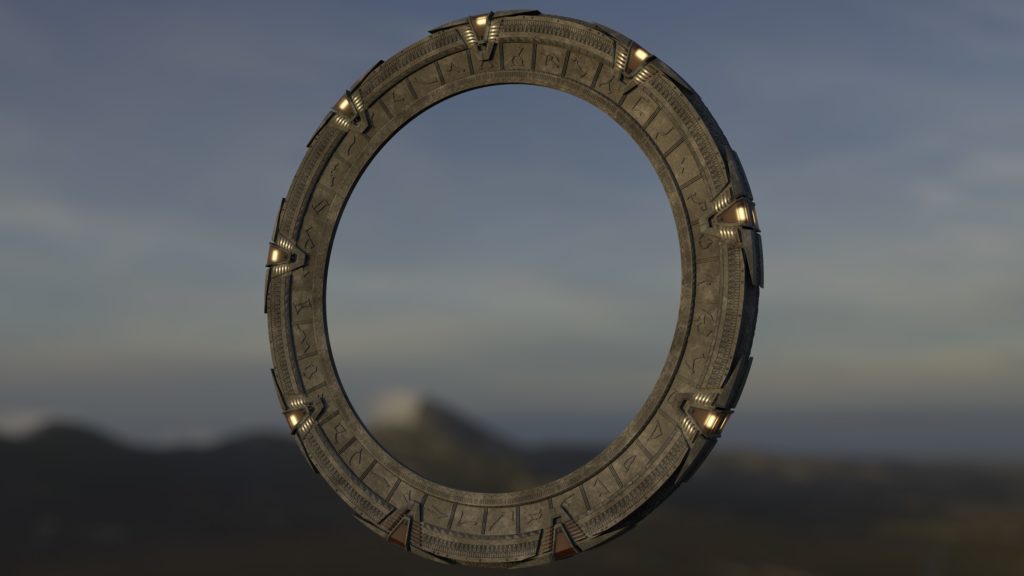
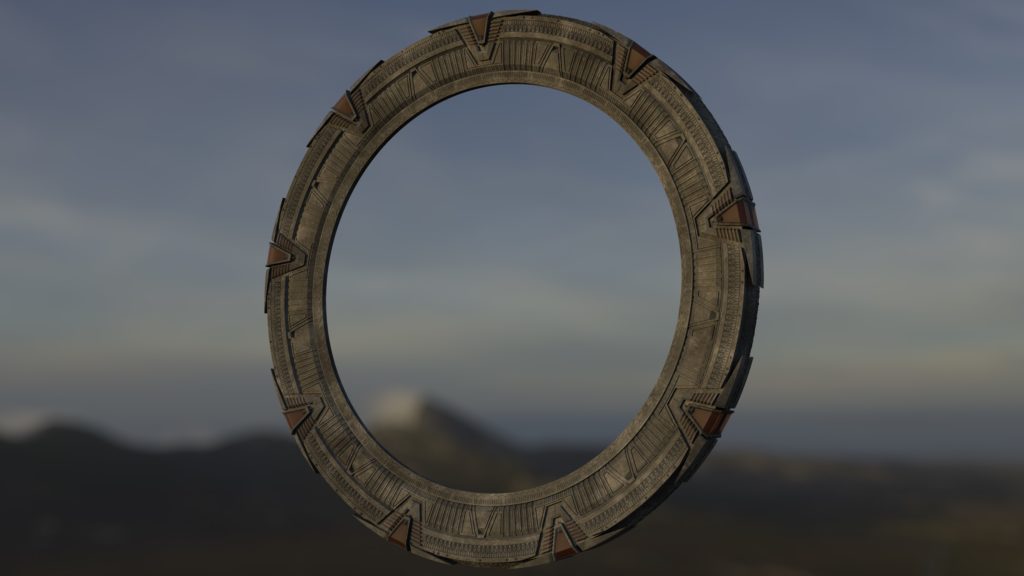
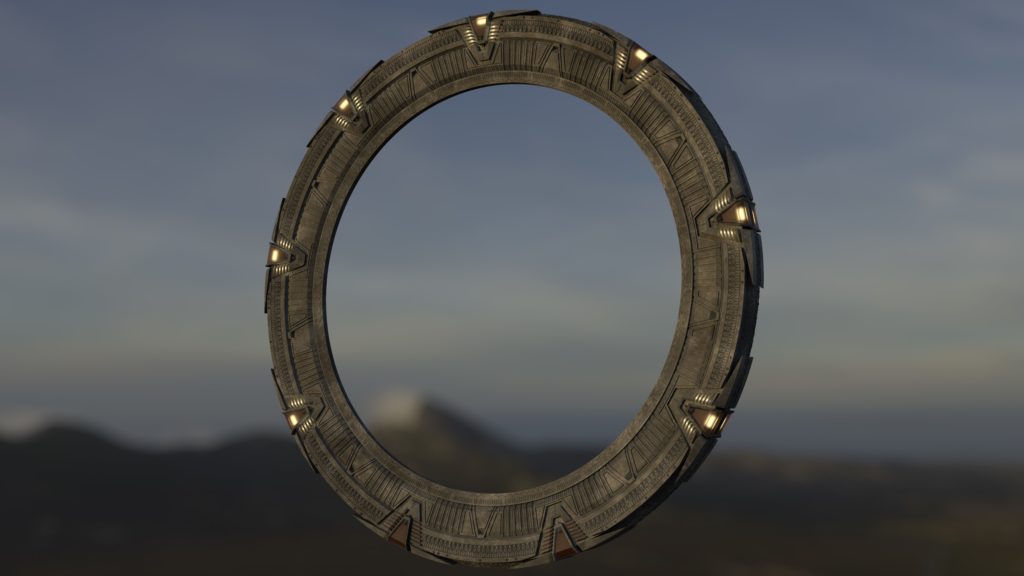
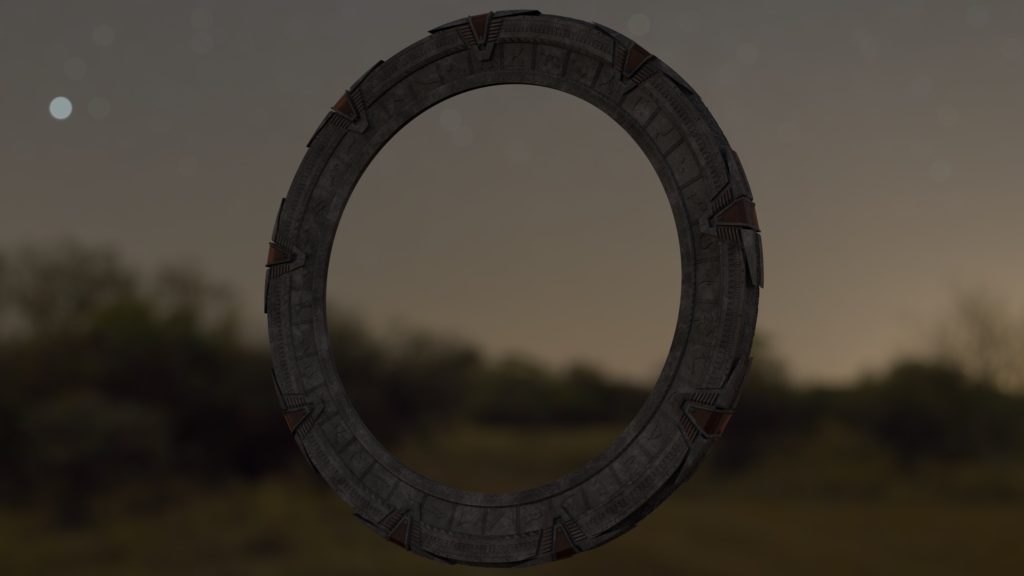
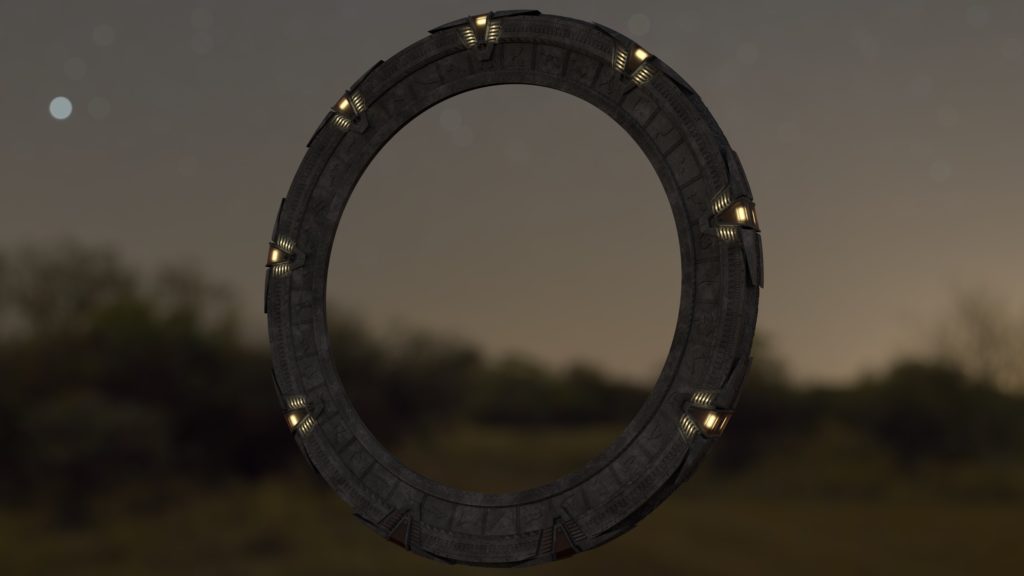
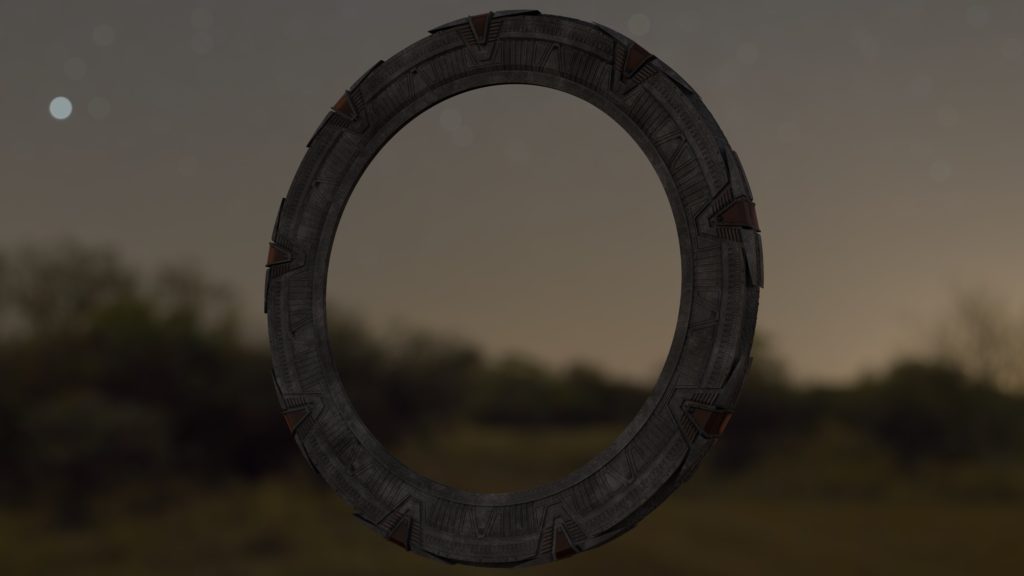
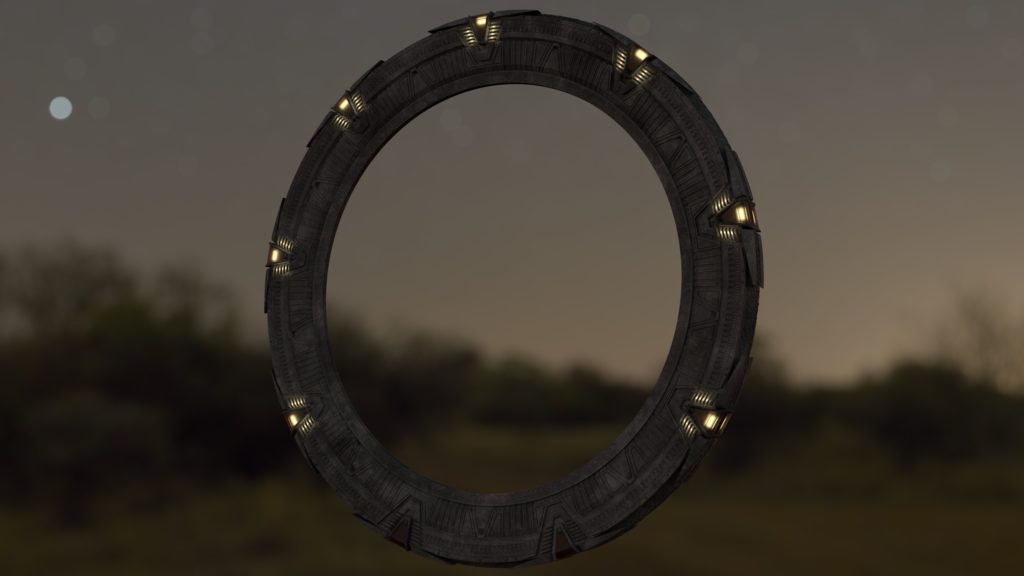
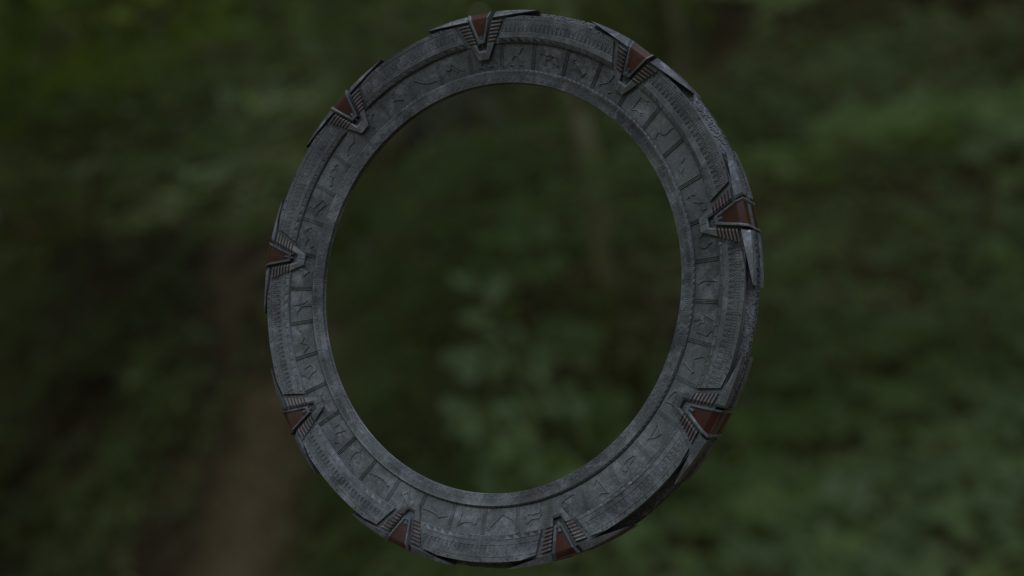
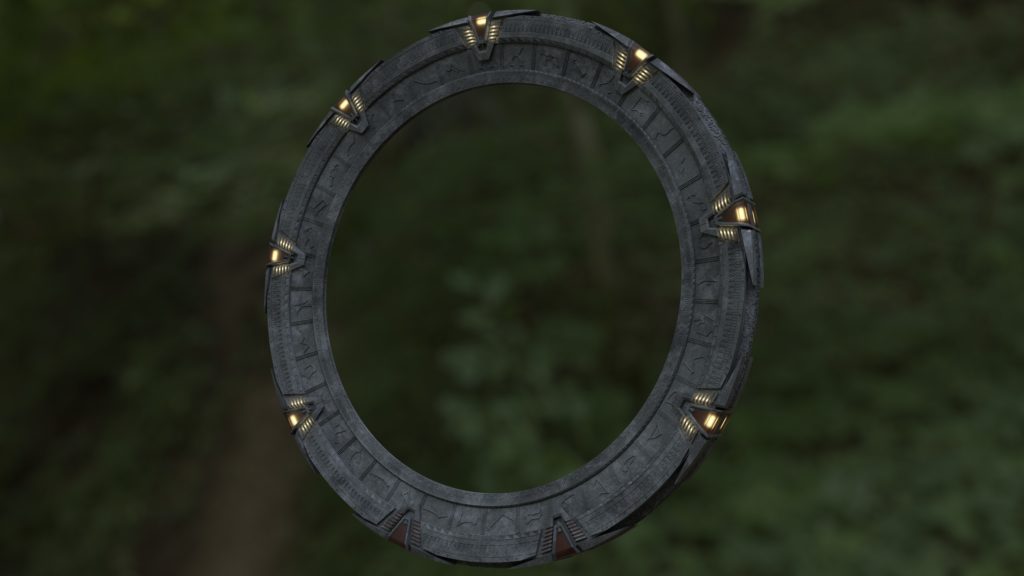
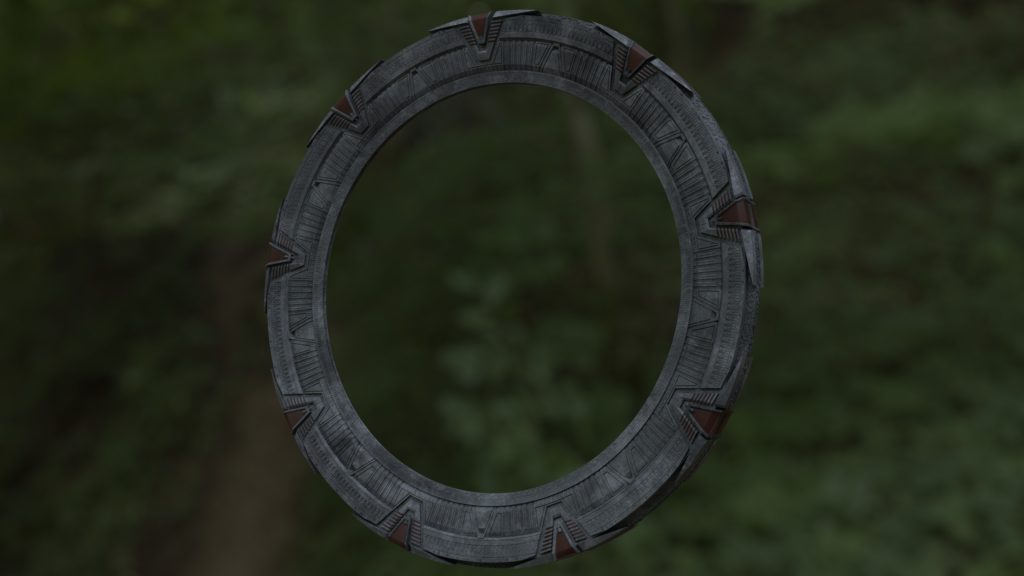
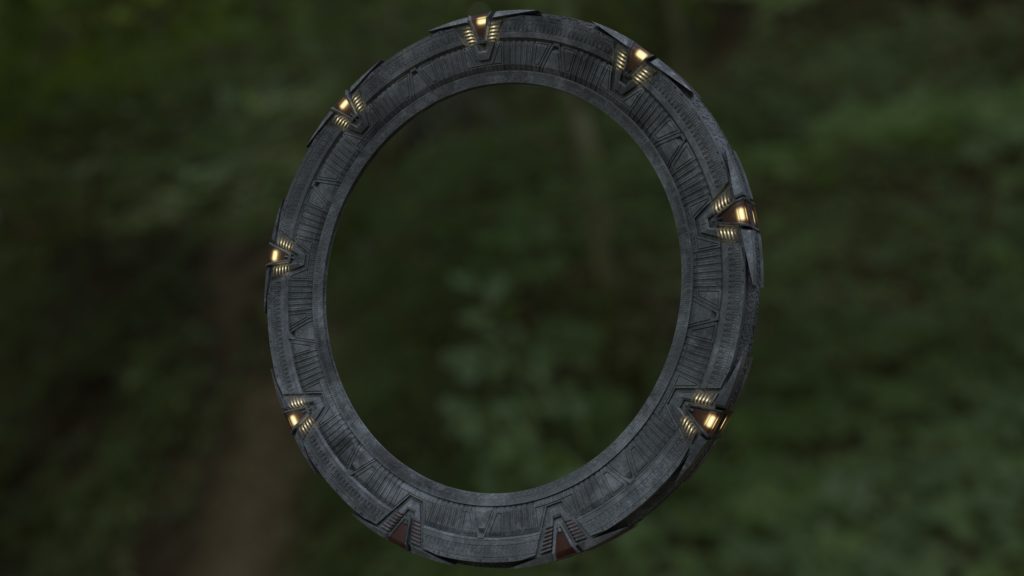
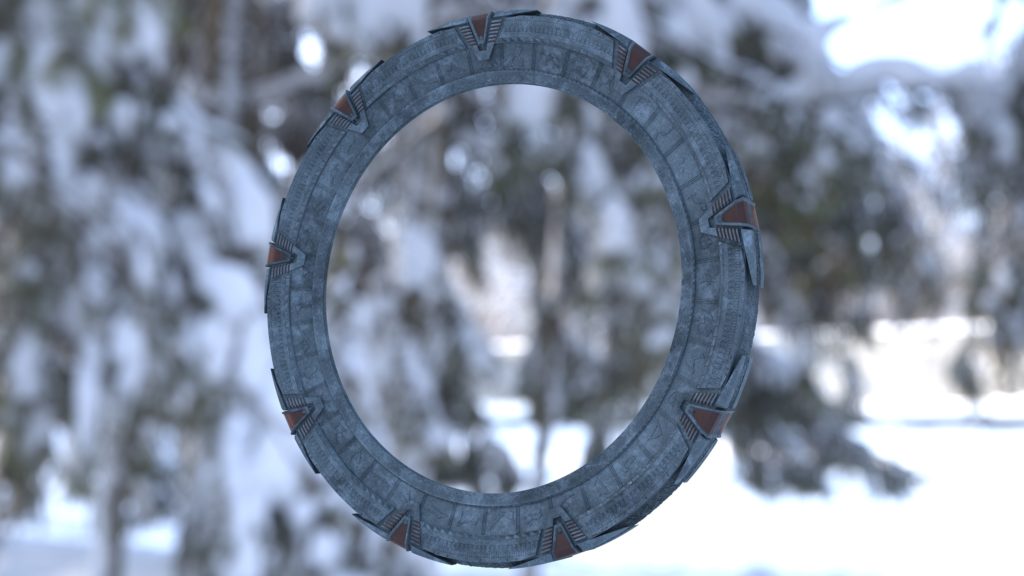
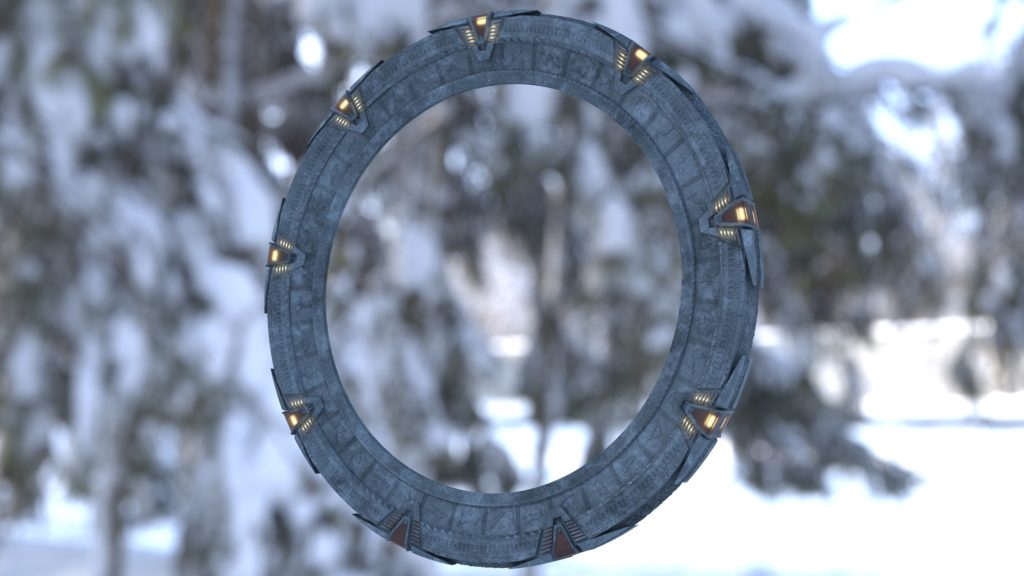
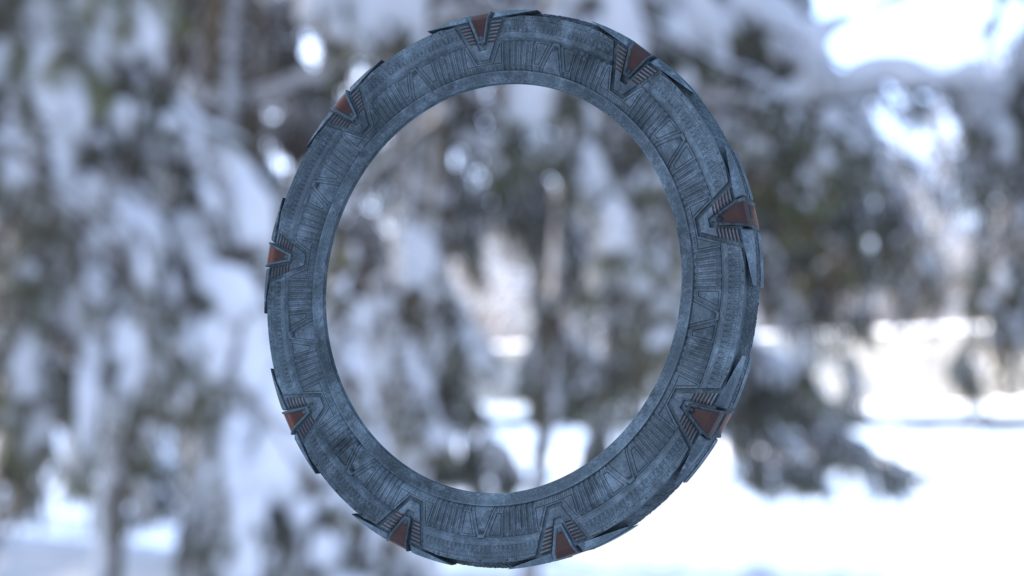
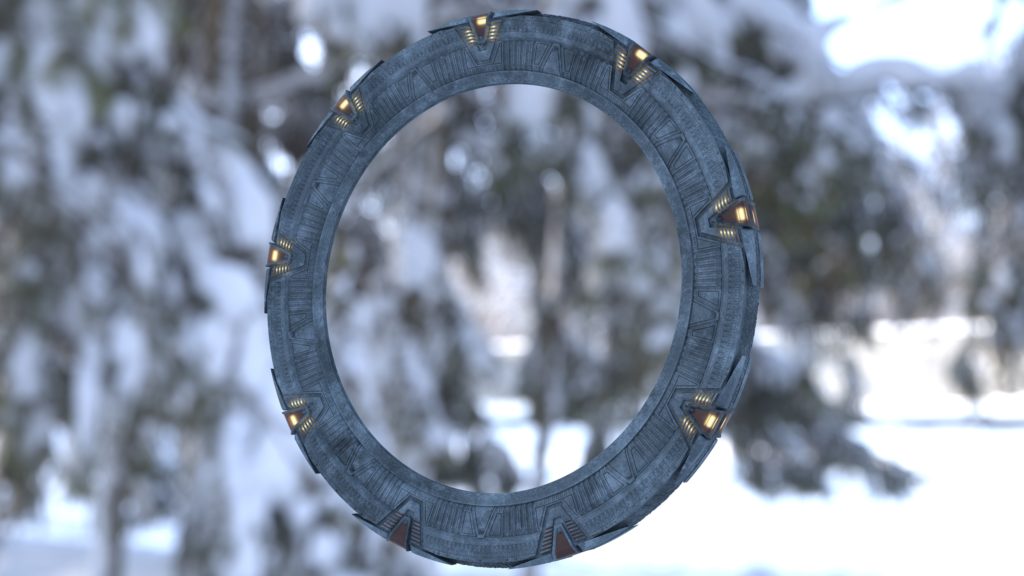
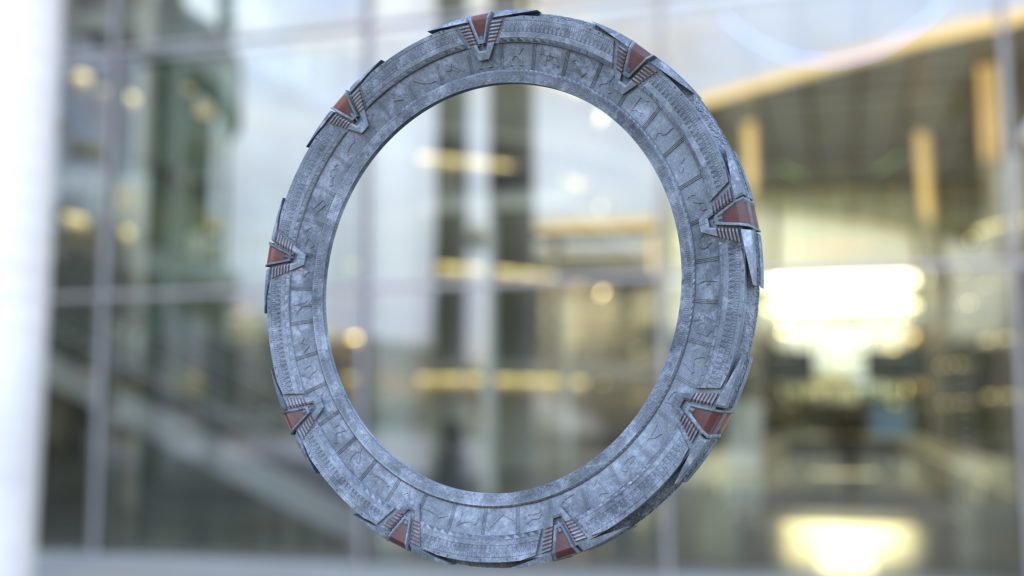
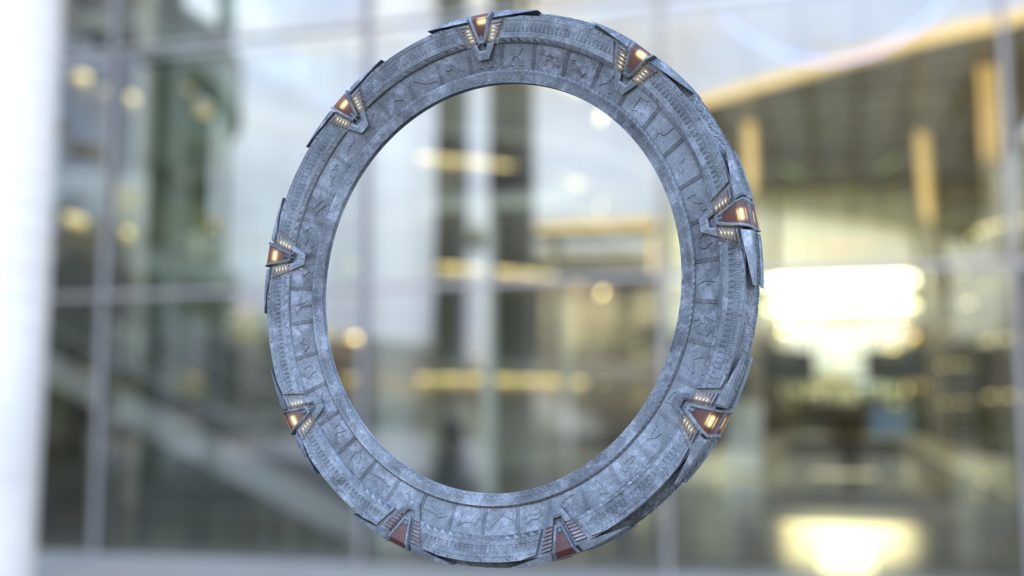
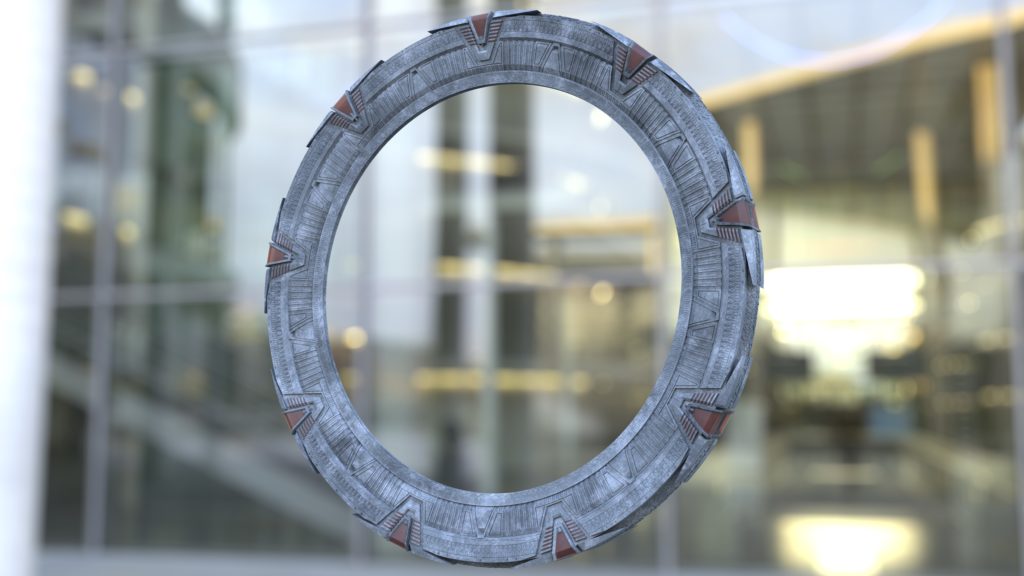
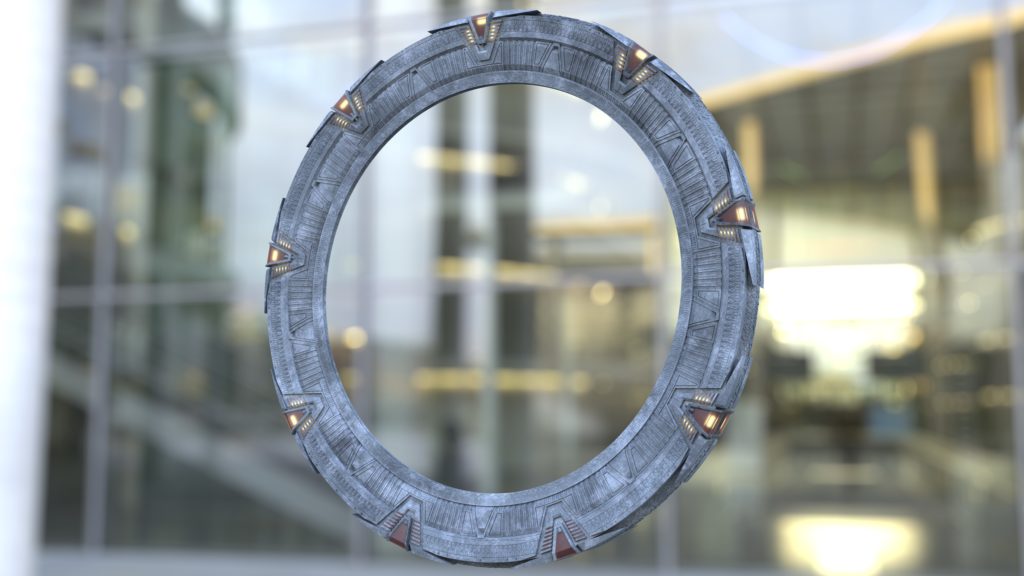
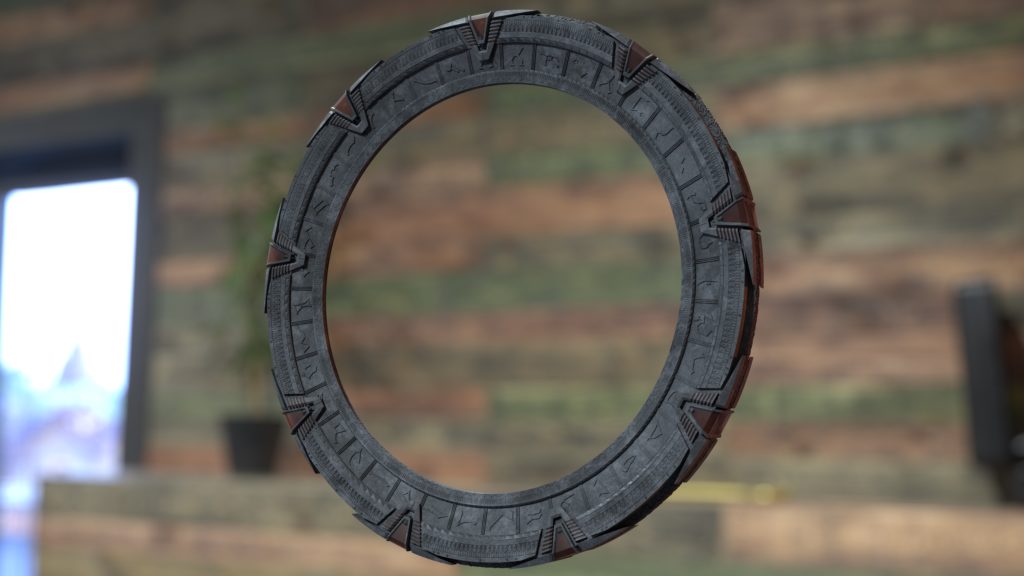
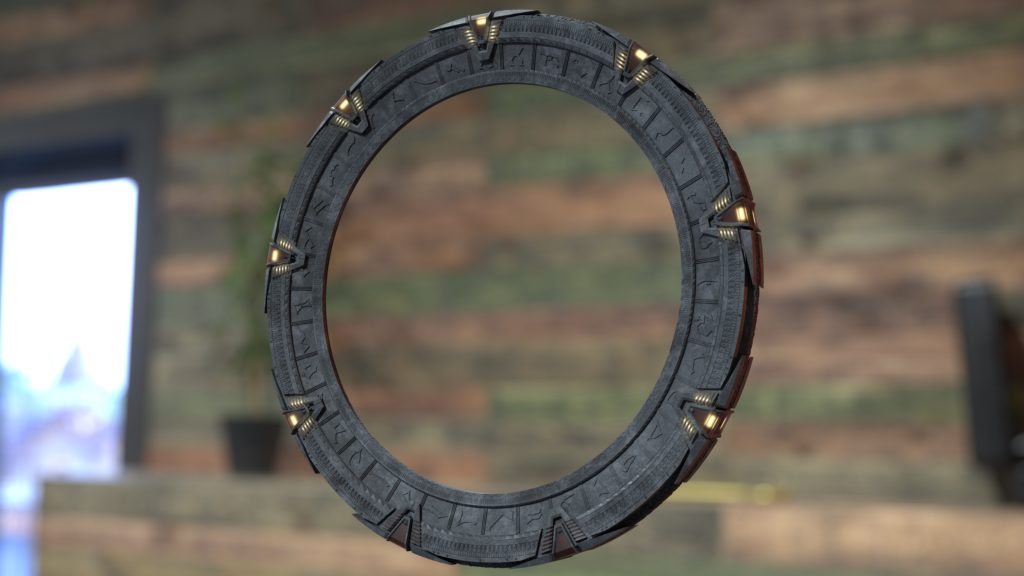
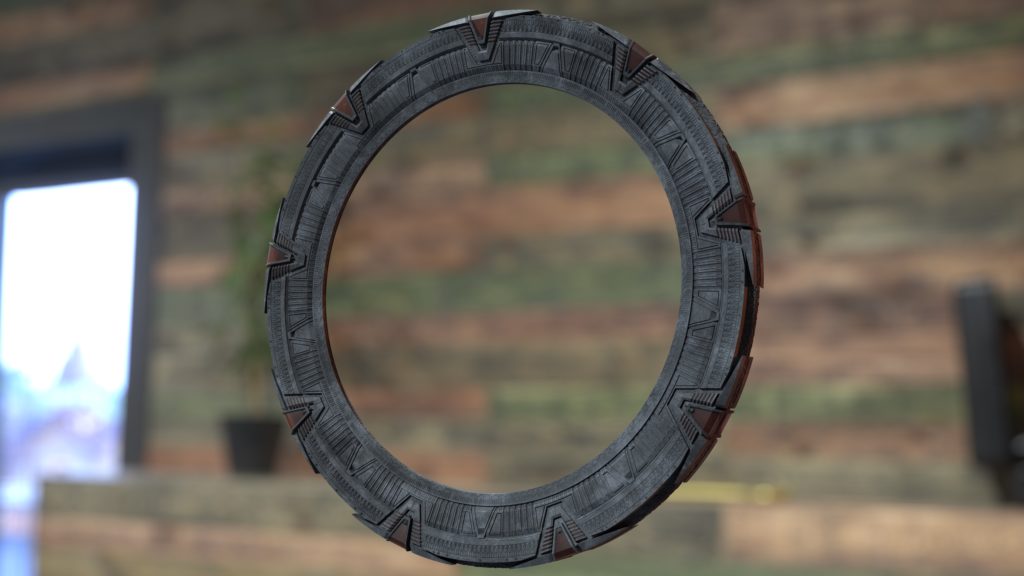

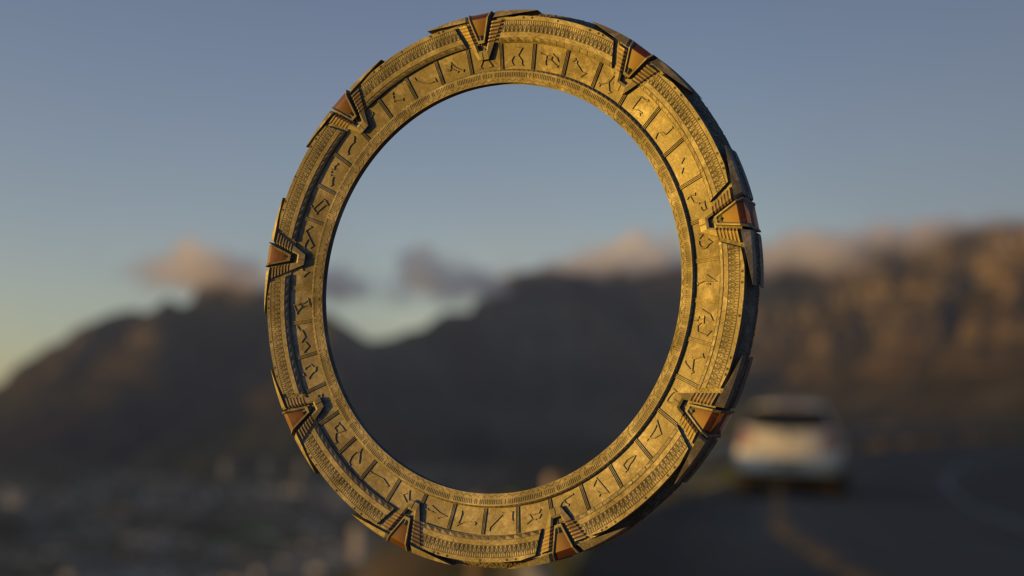
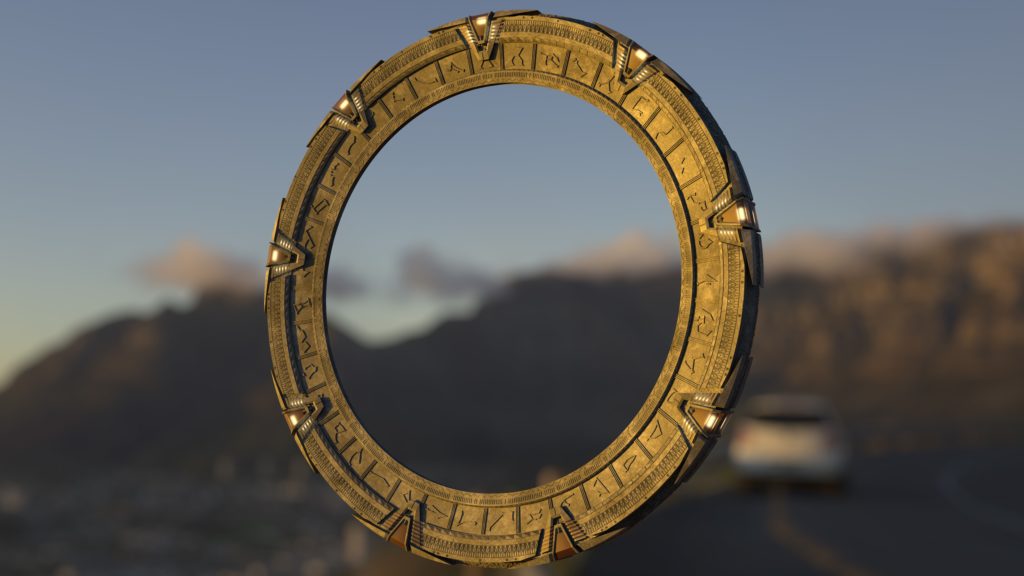
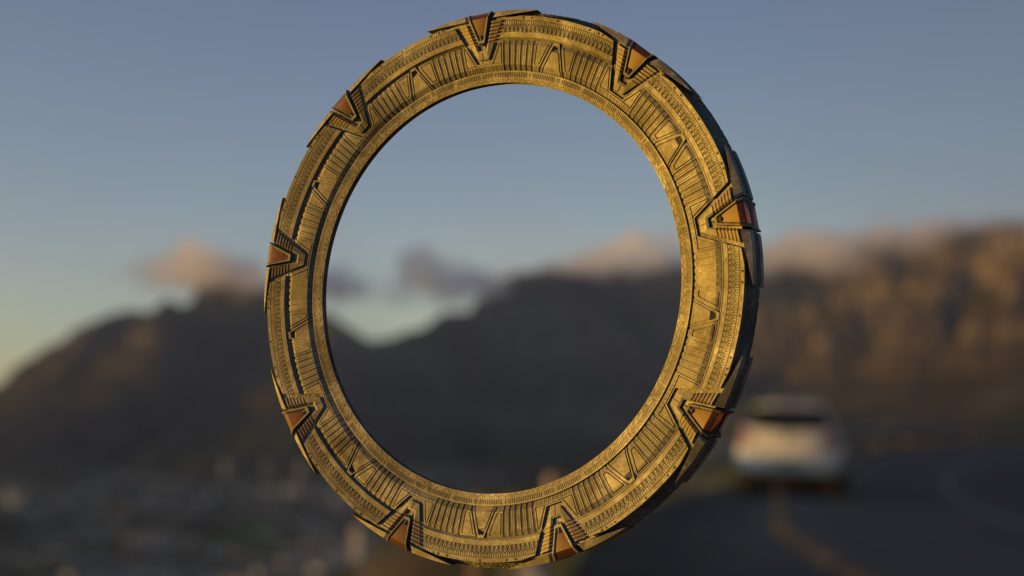
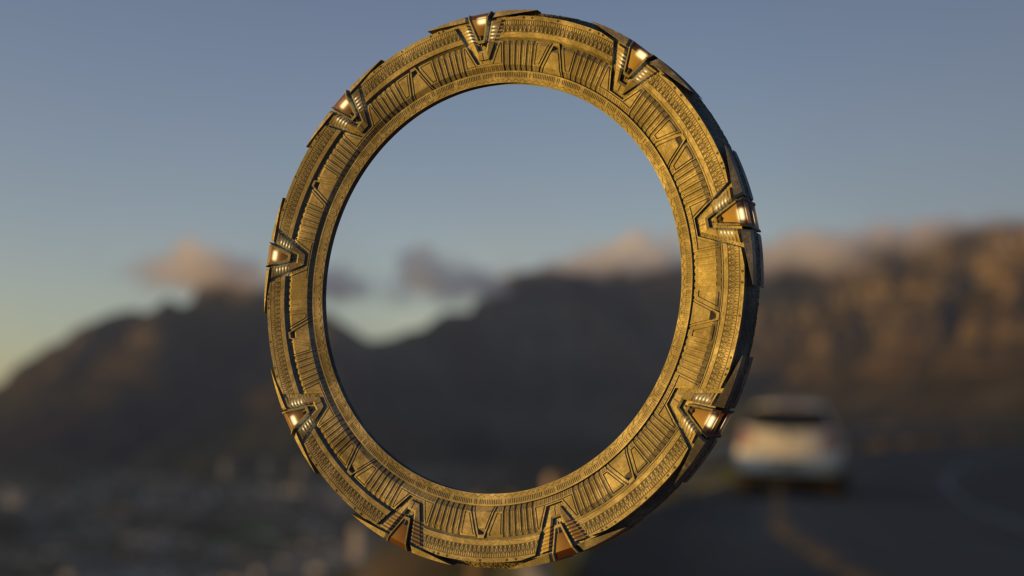
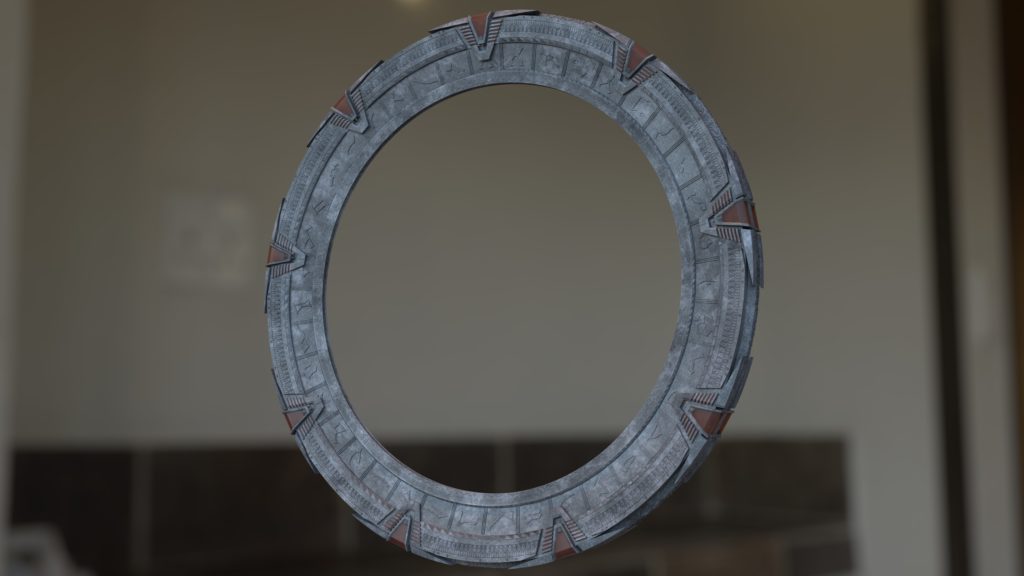
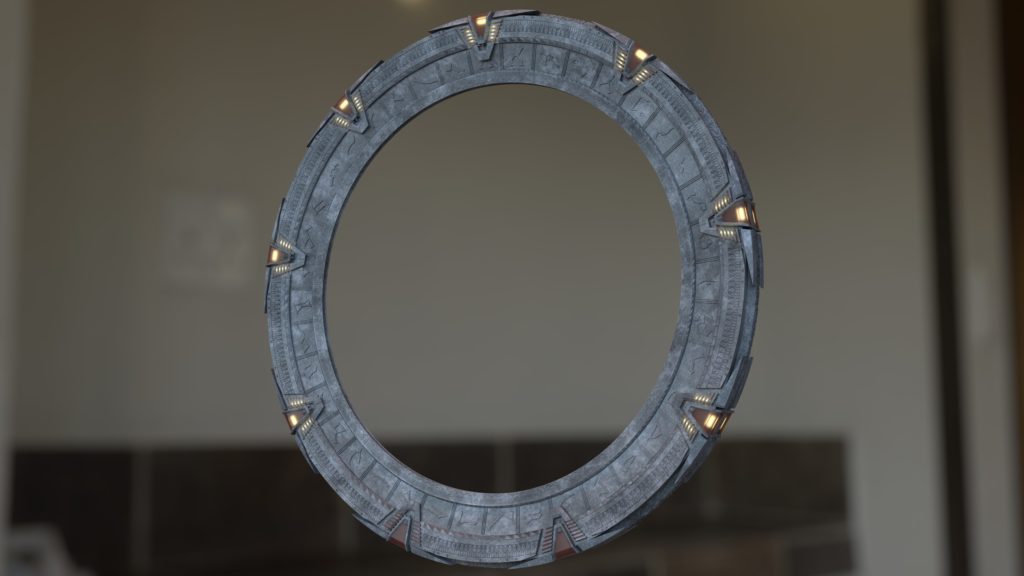
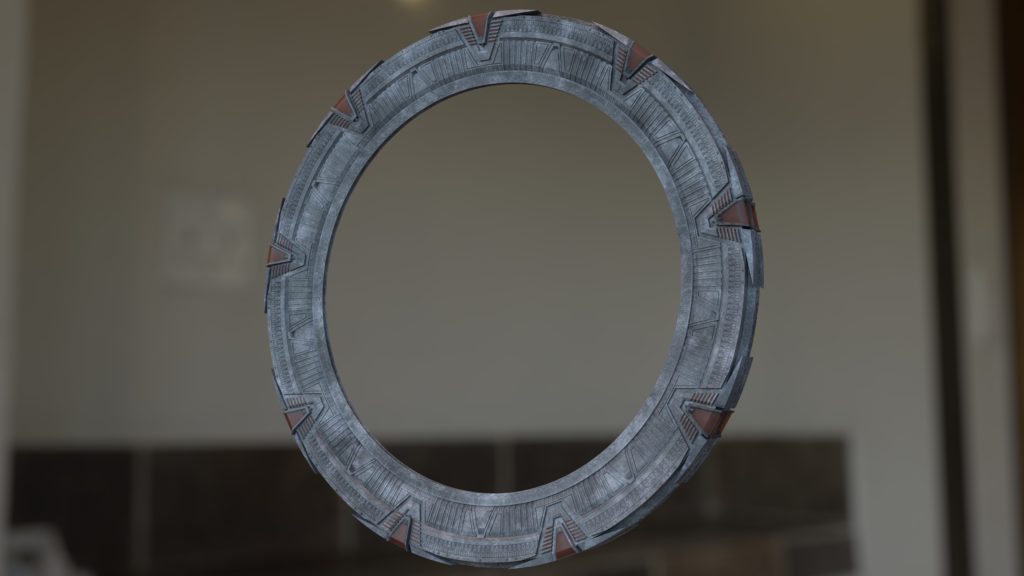
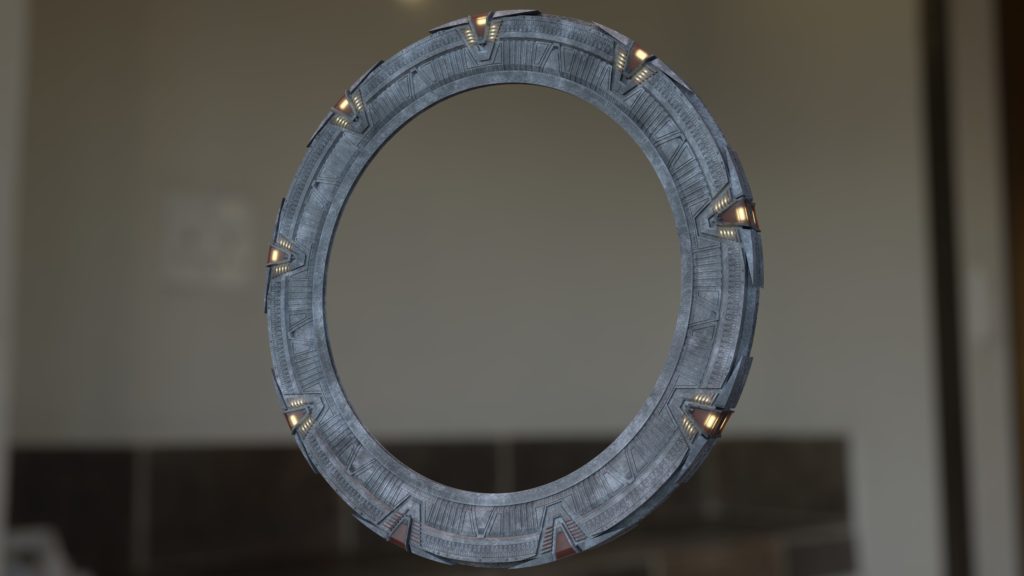
Model Revision History:
- Version 3.0, March 28, 2021:
Initial Release
| ↑1 | SGC Logo by mikepjr |
|---|---|
| ↑2 | You can read a bit more about this in my post on the symbols of the movie version of the Abydos stargate |
